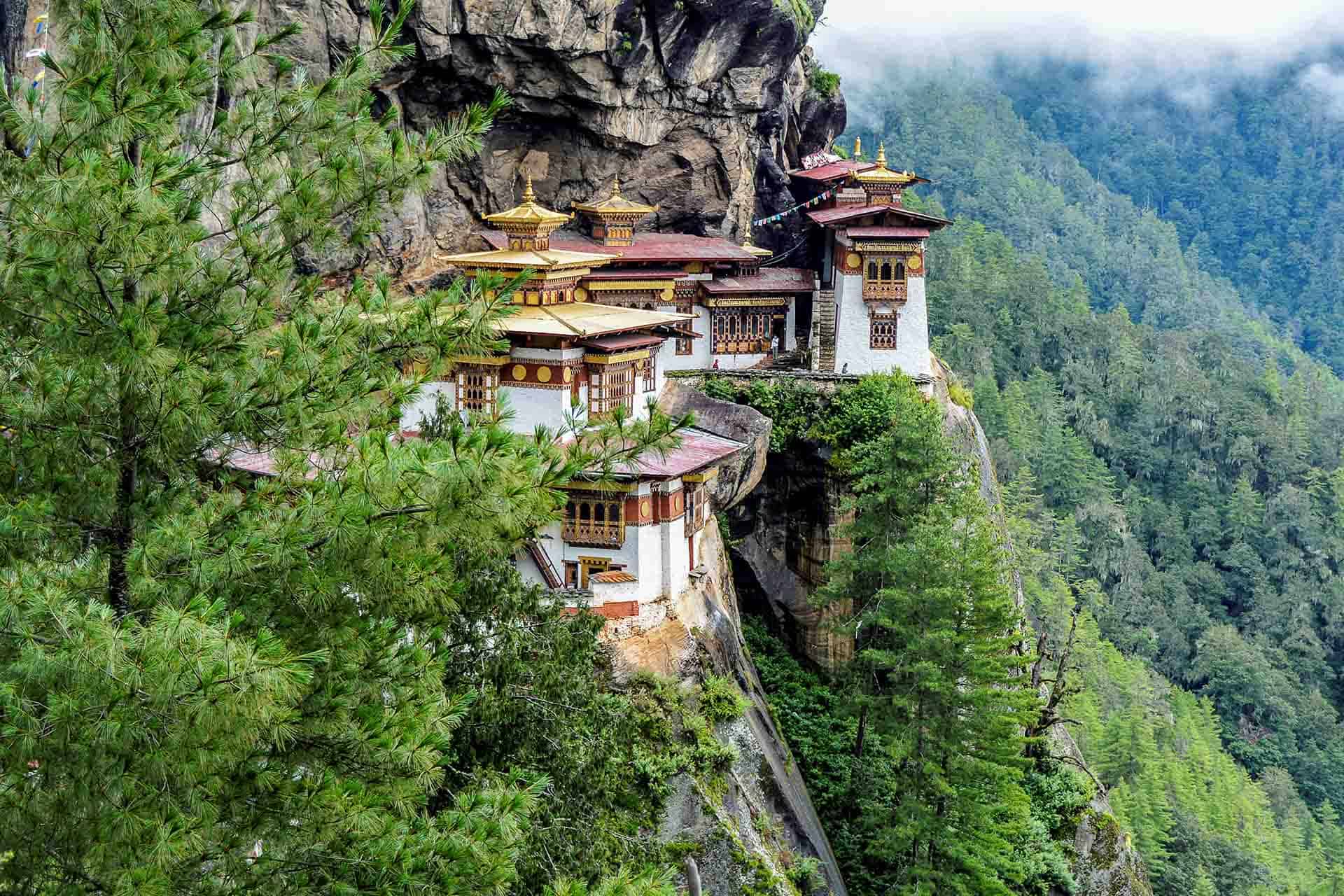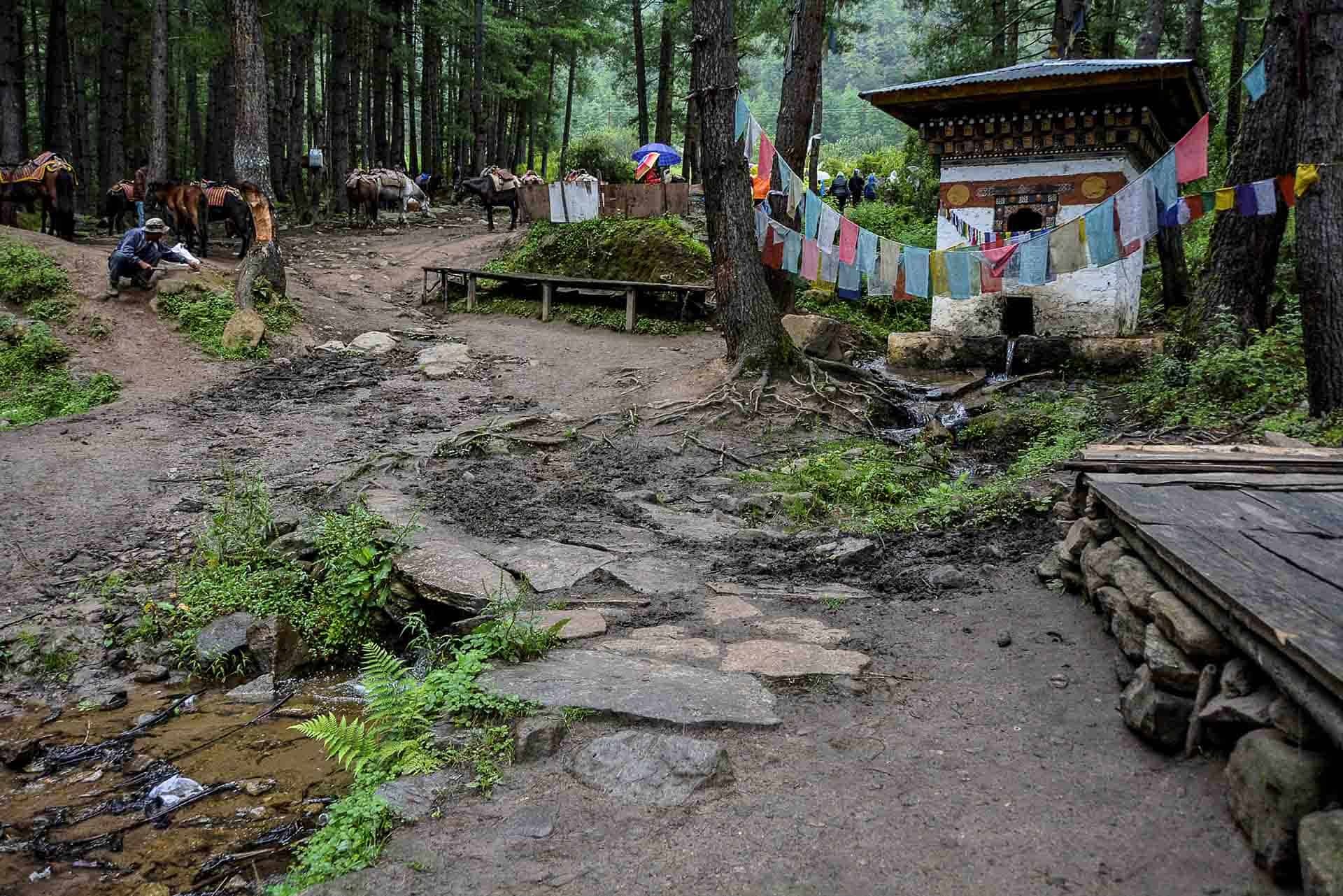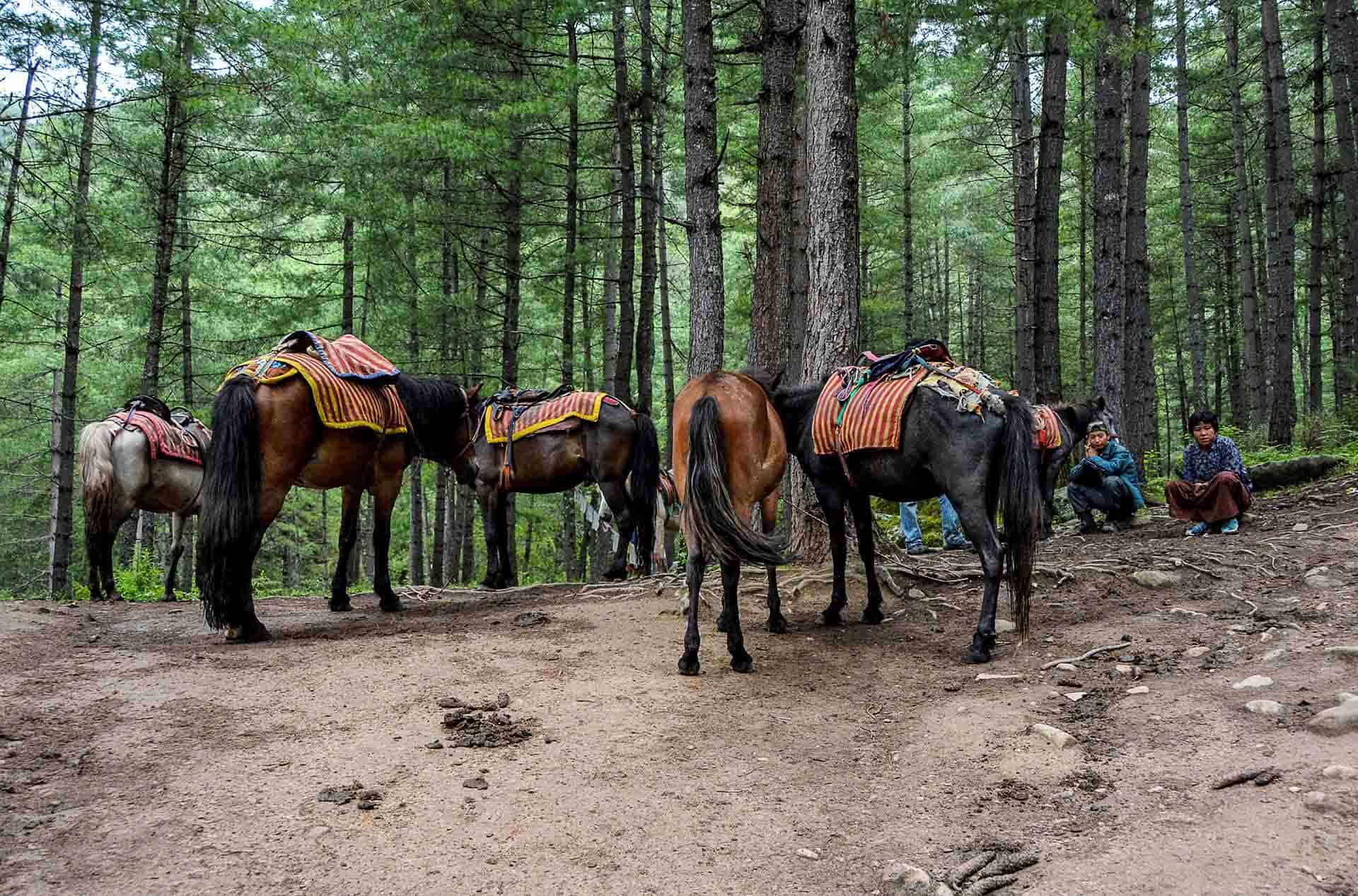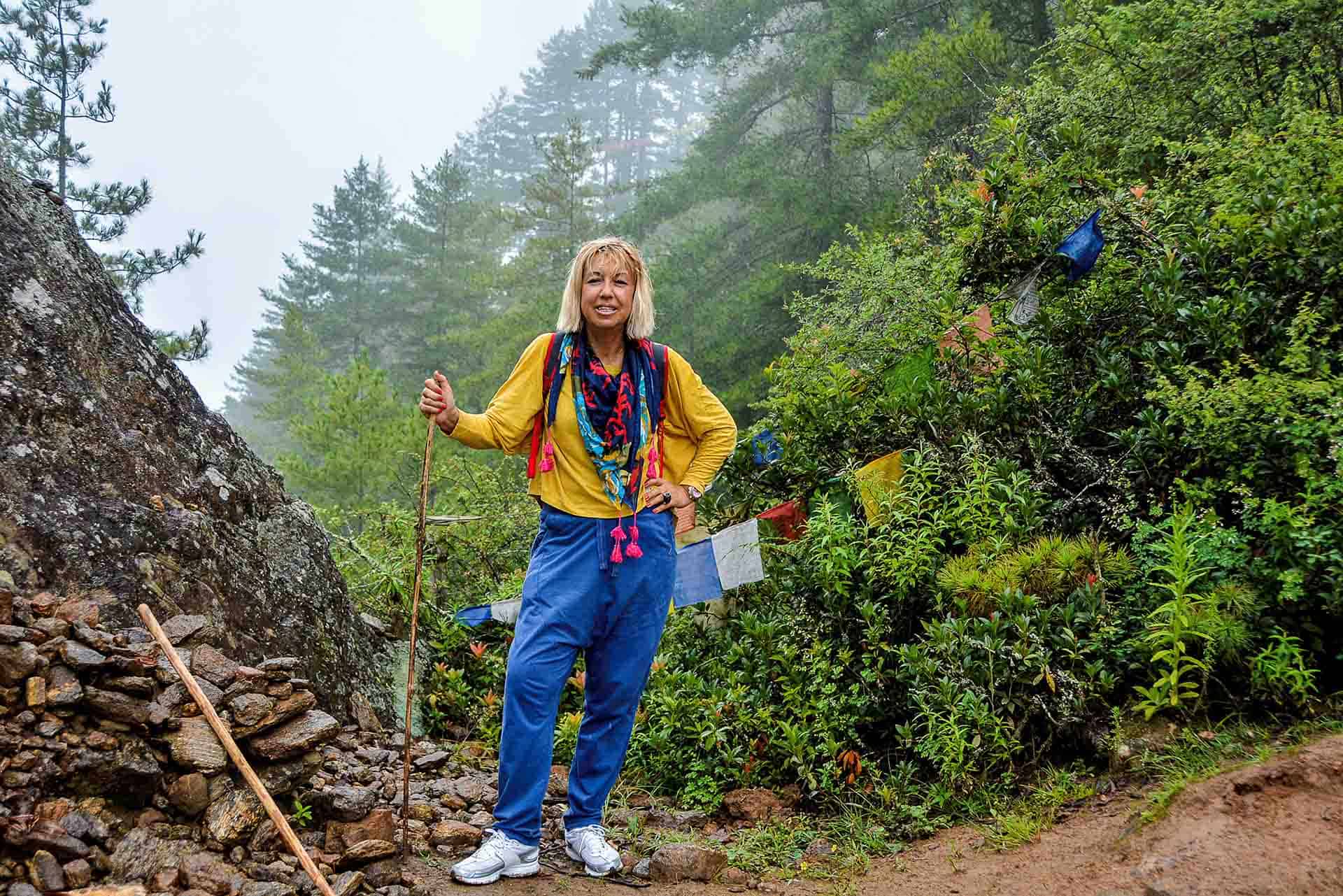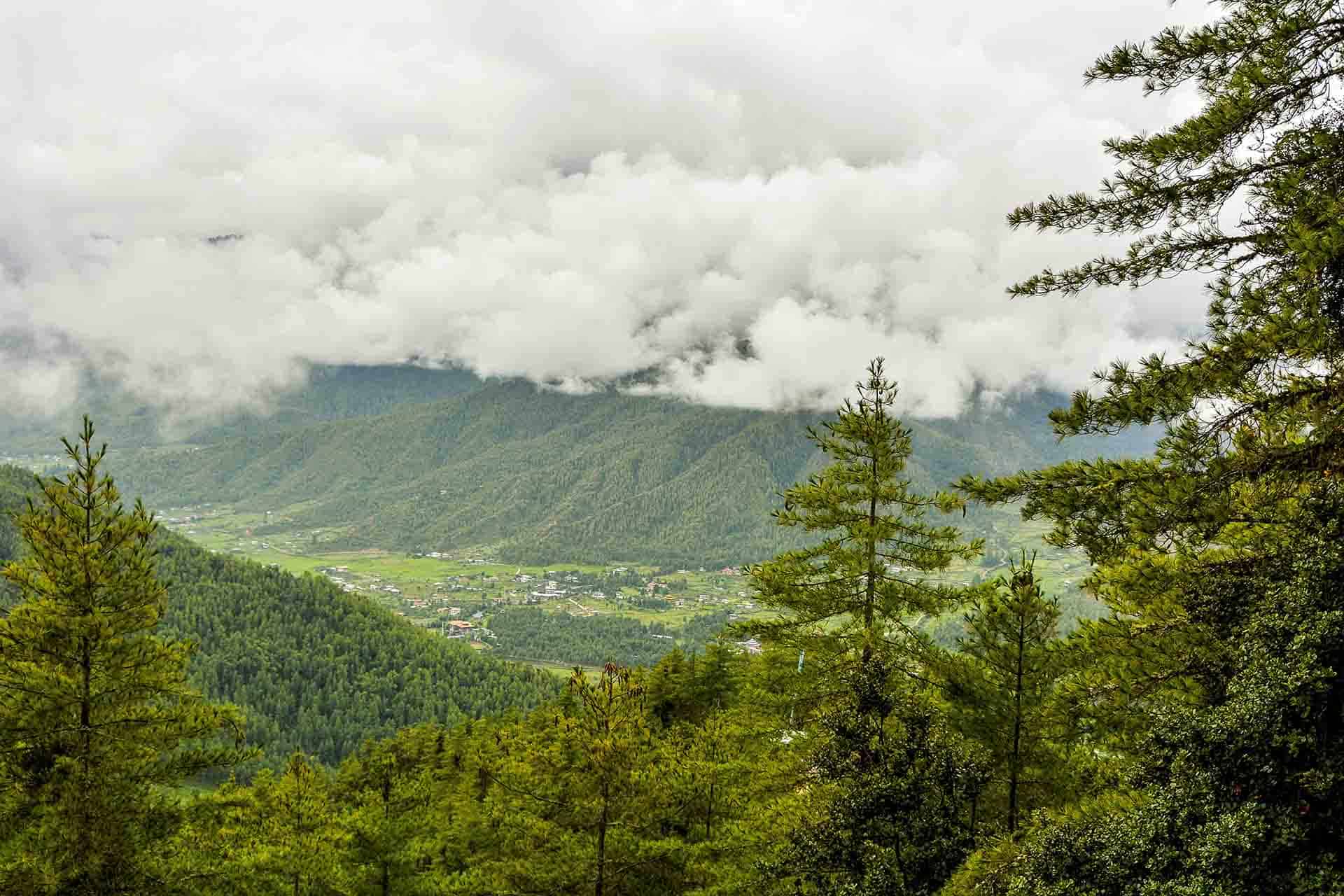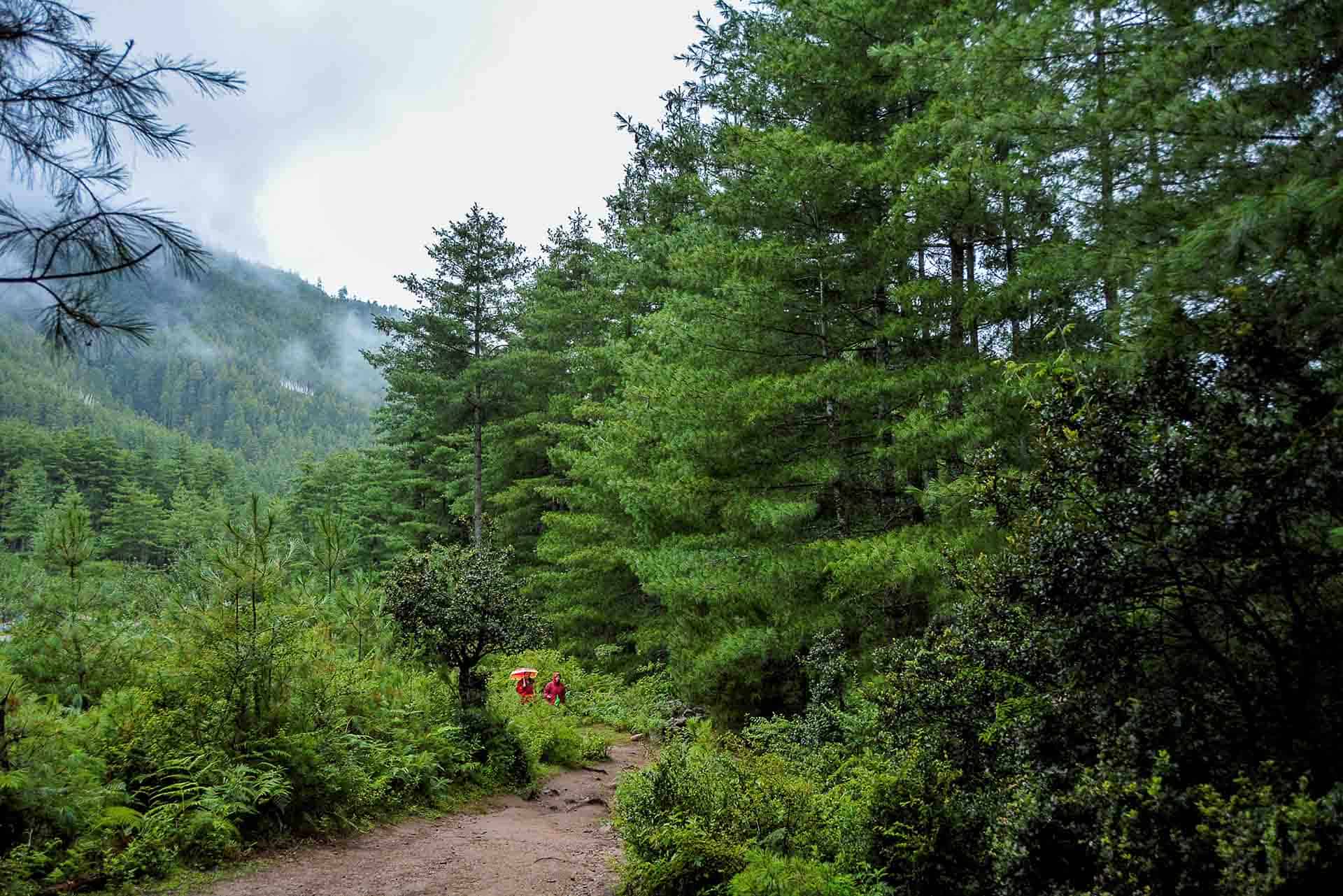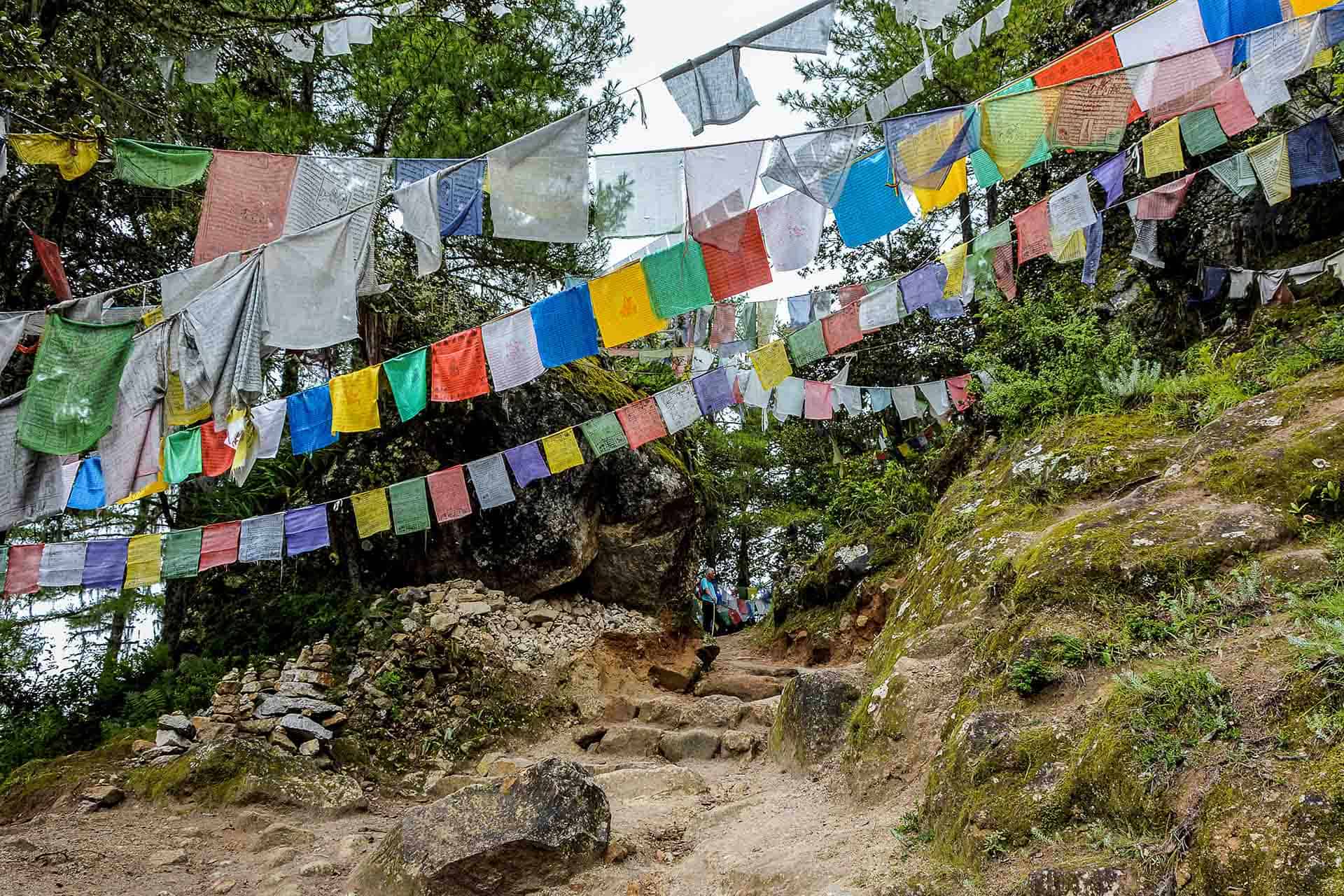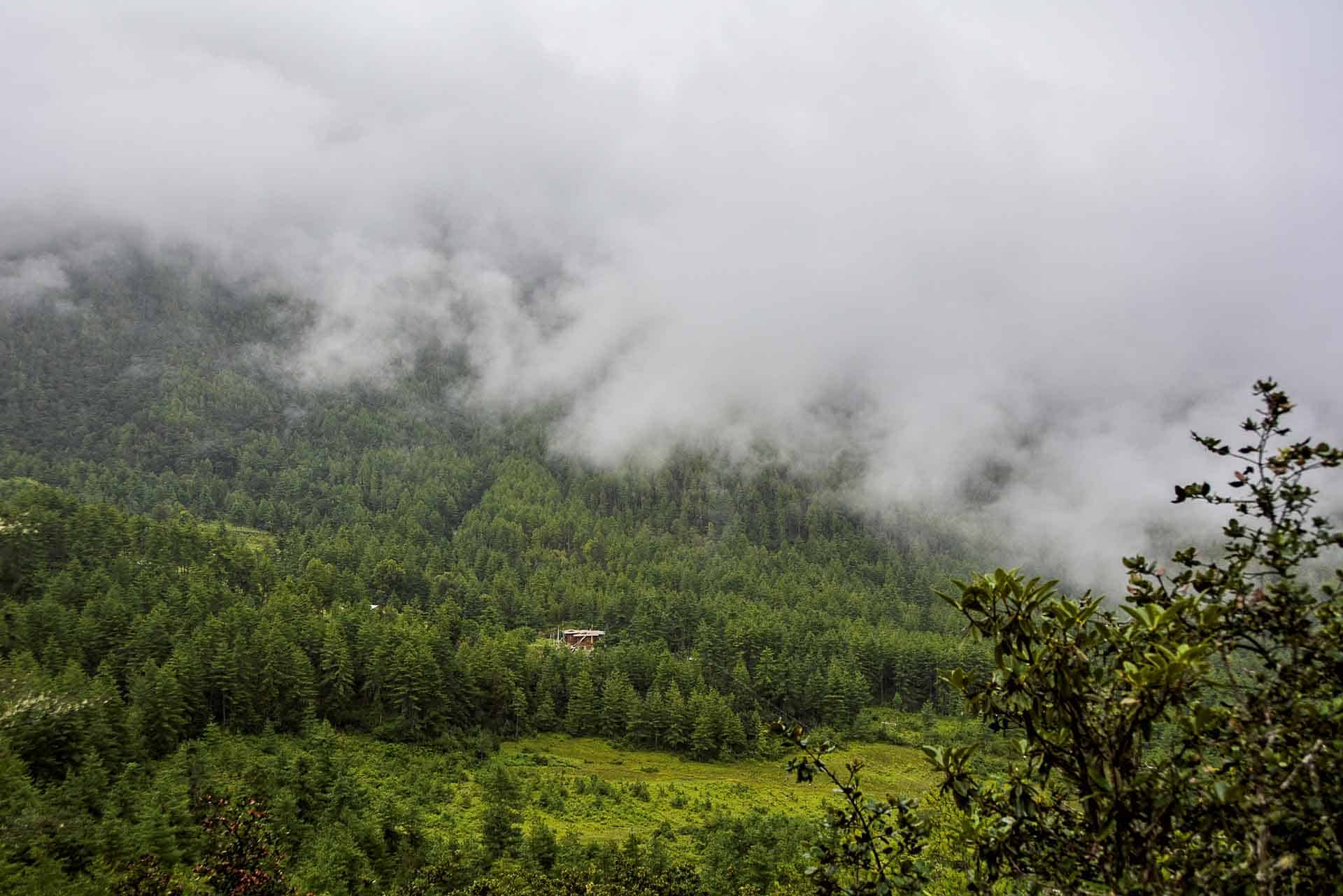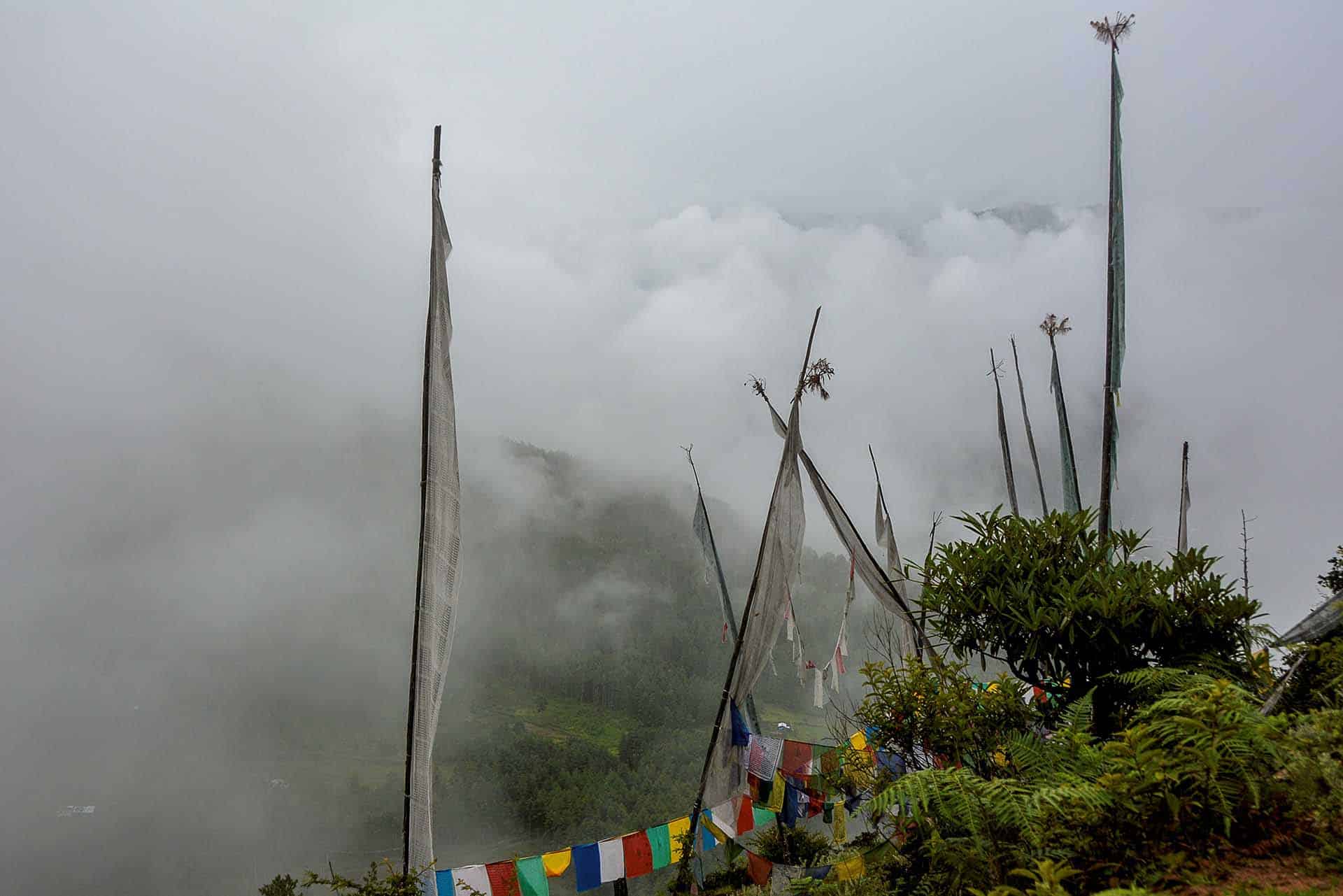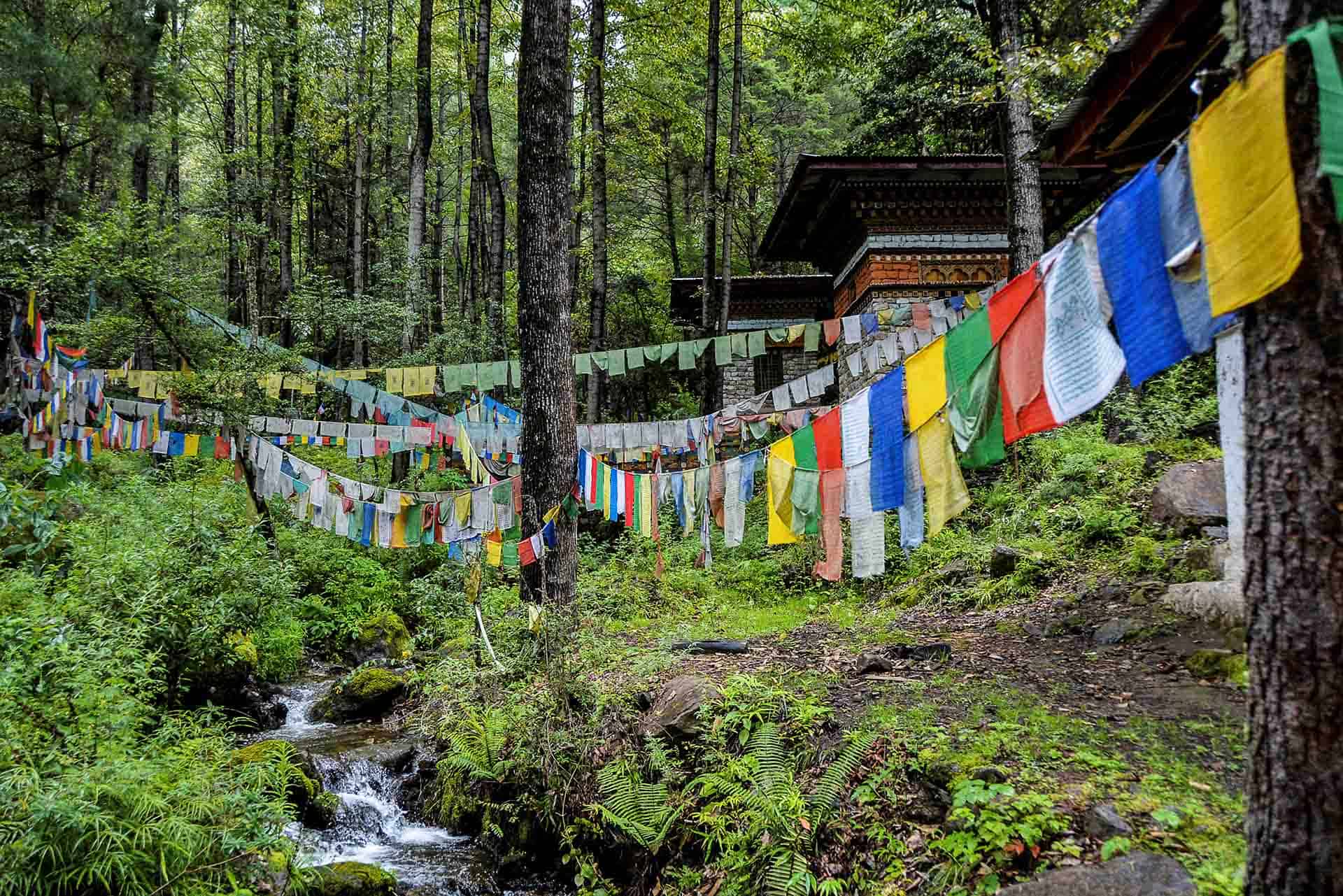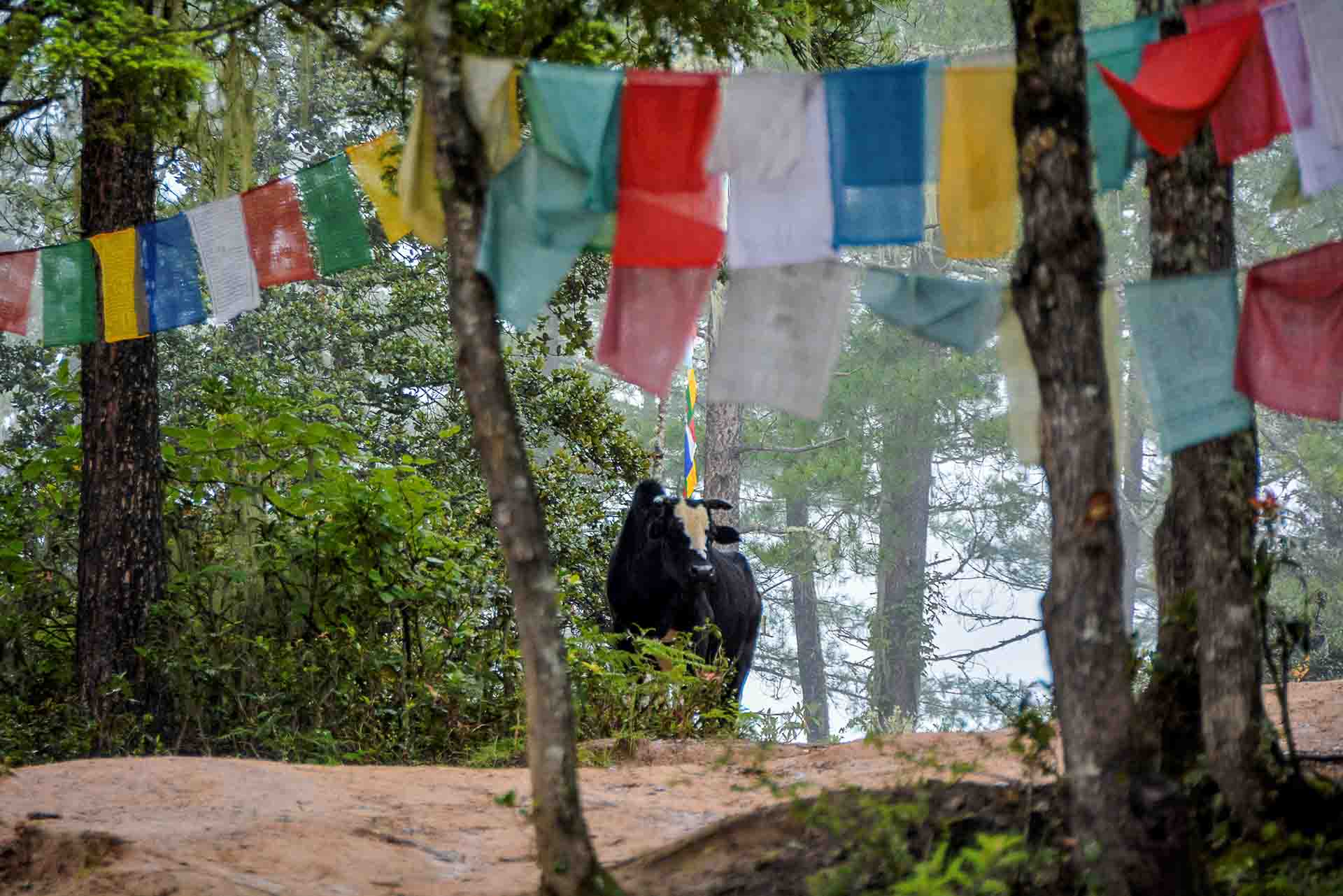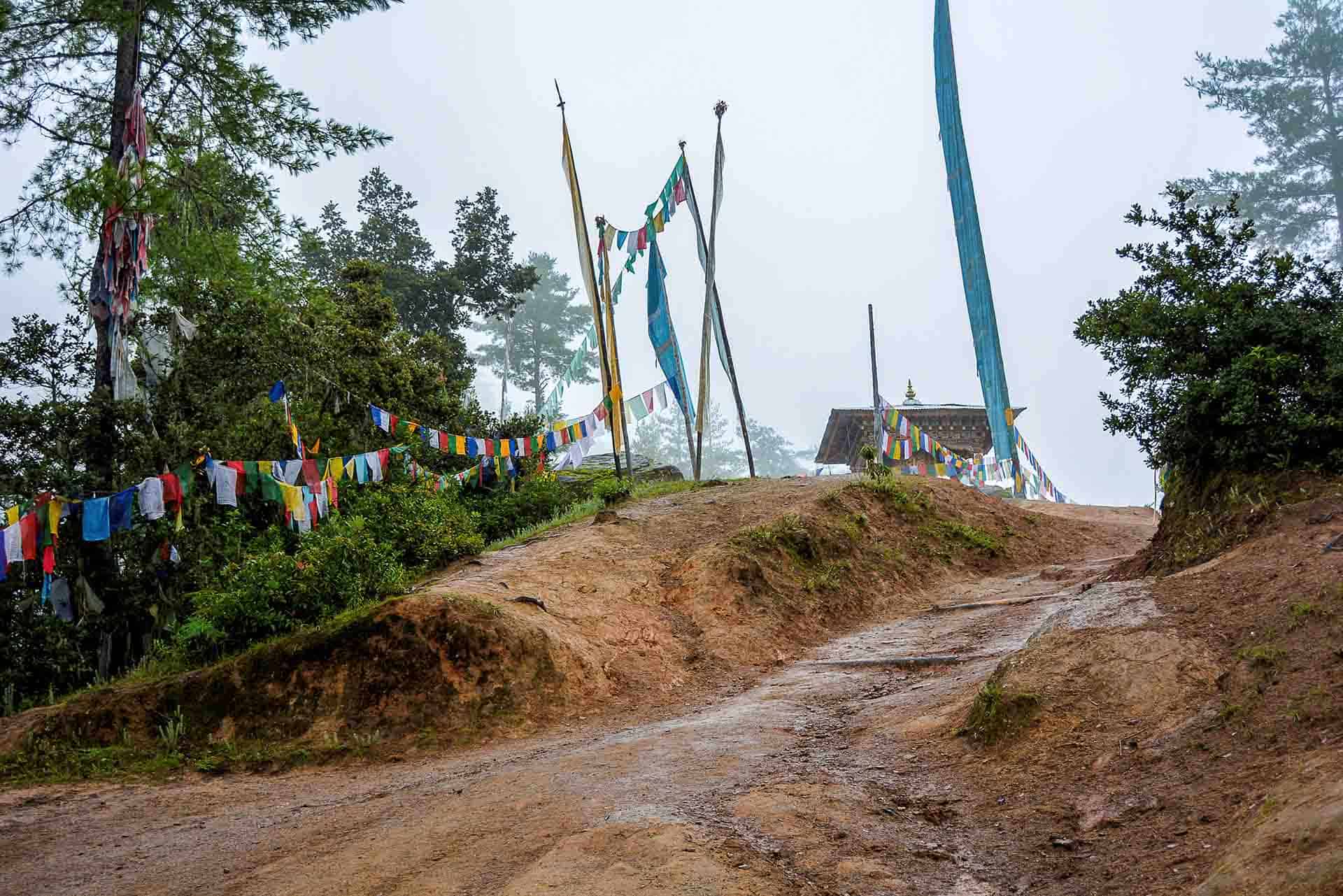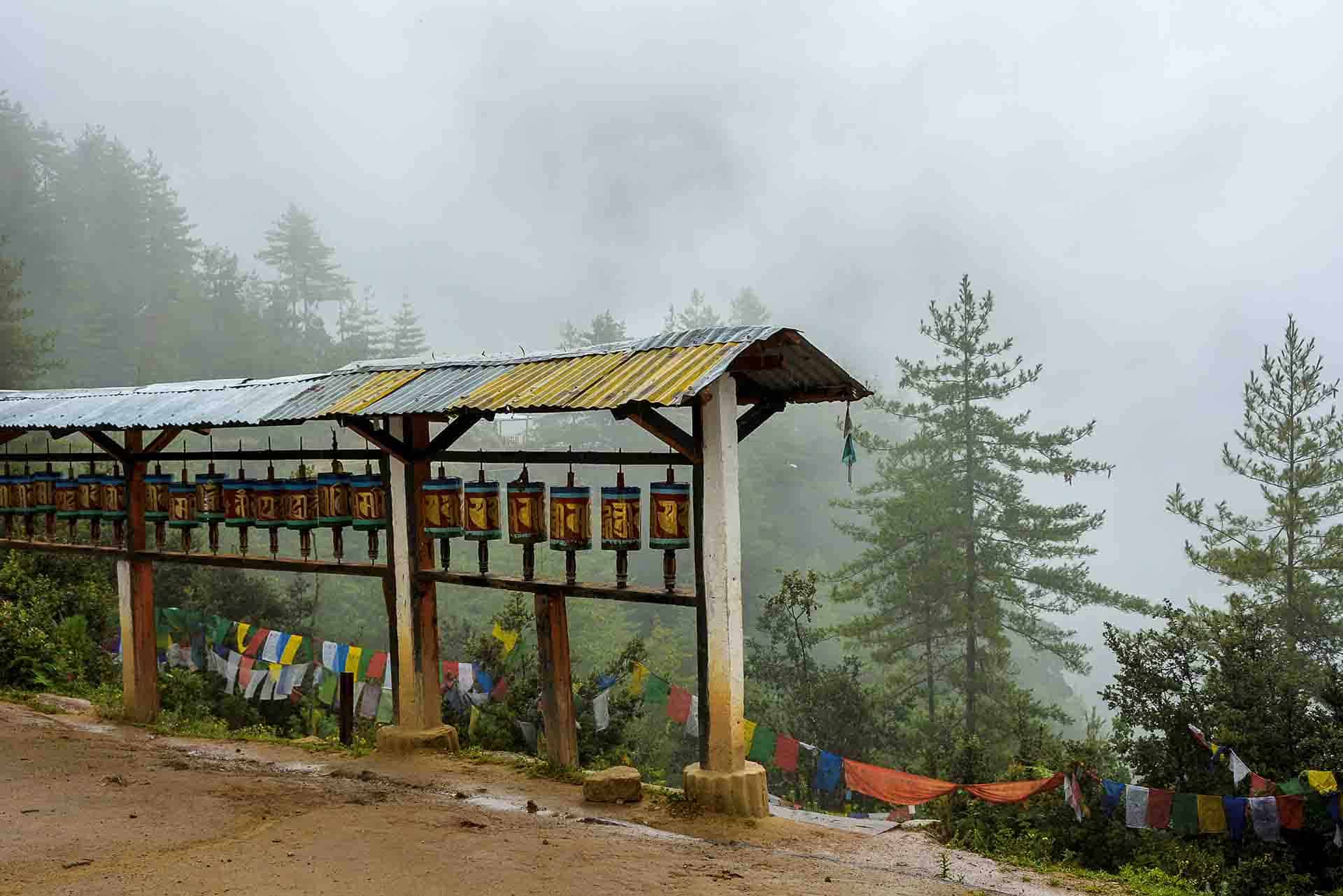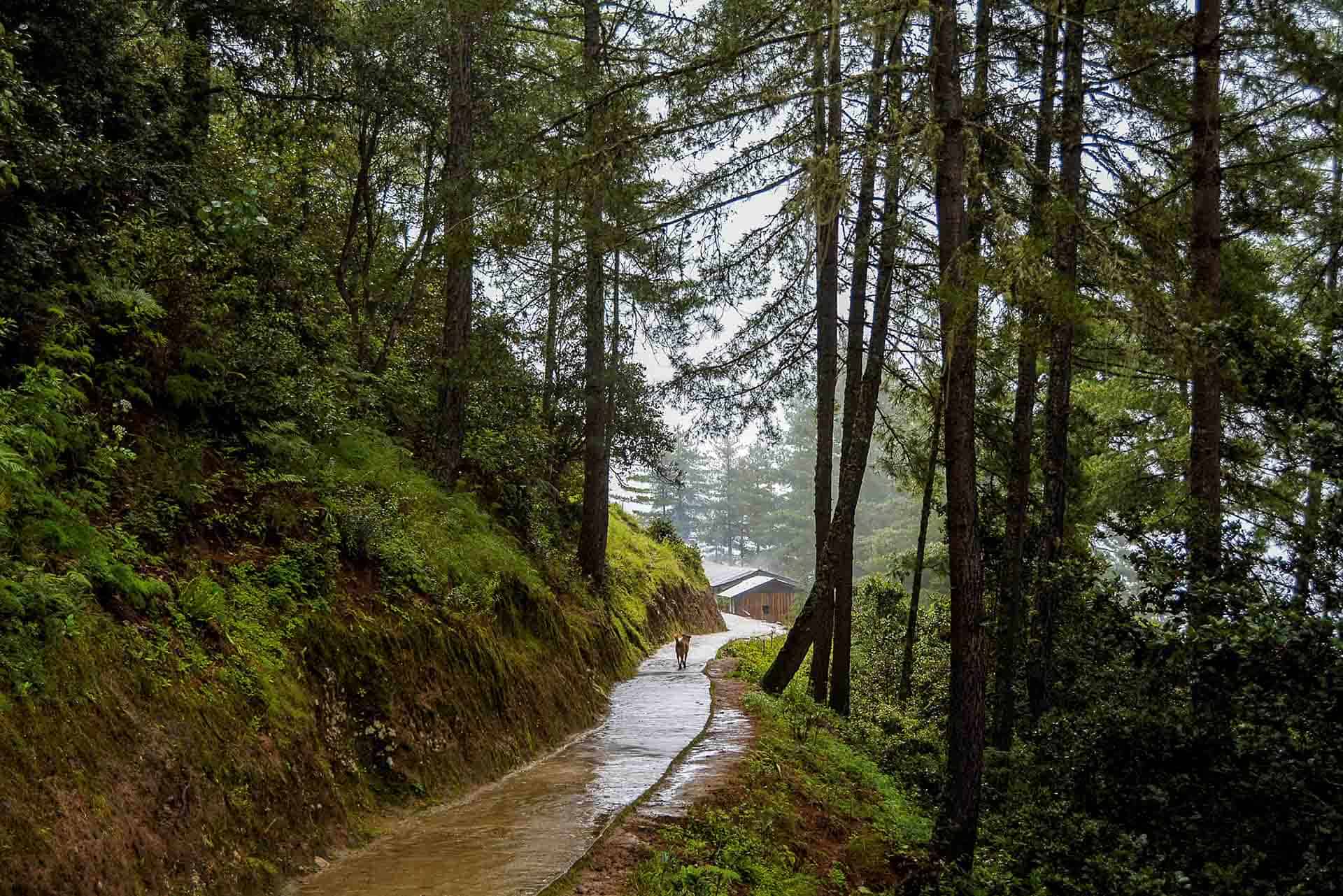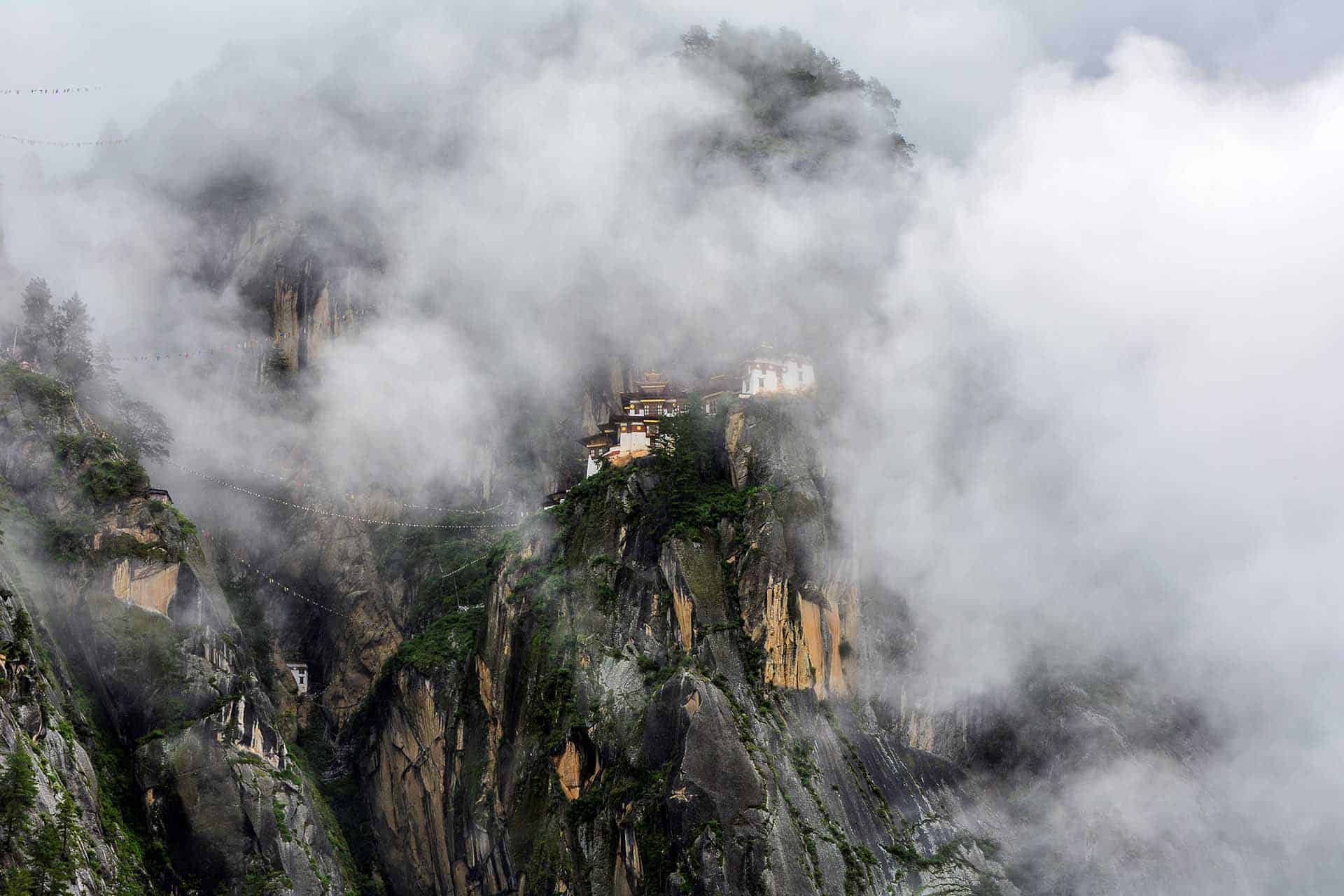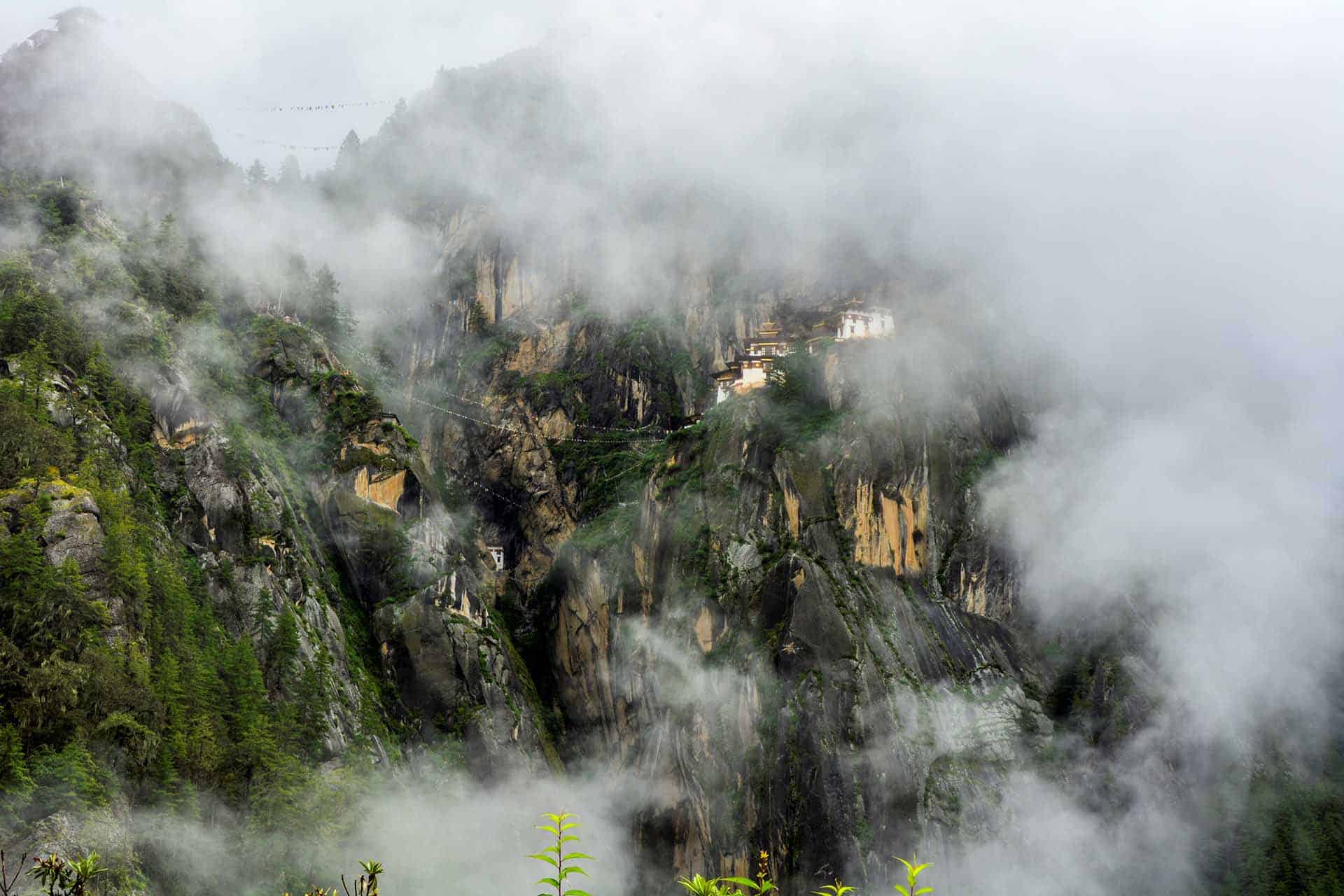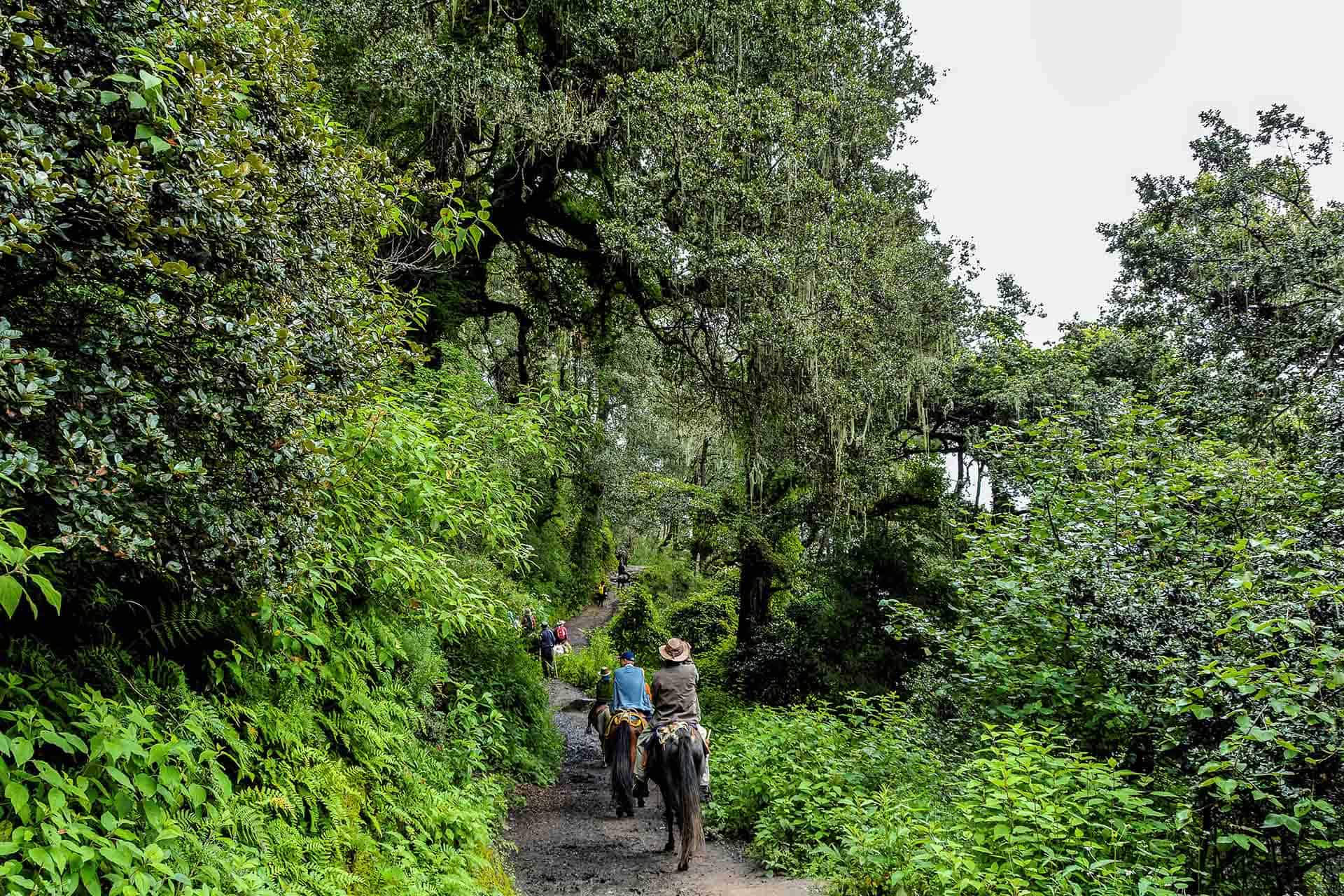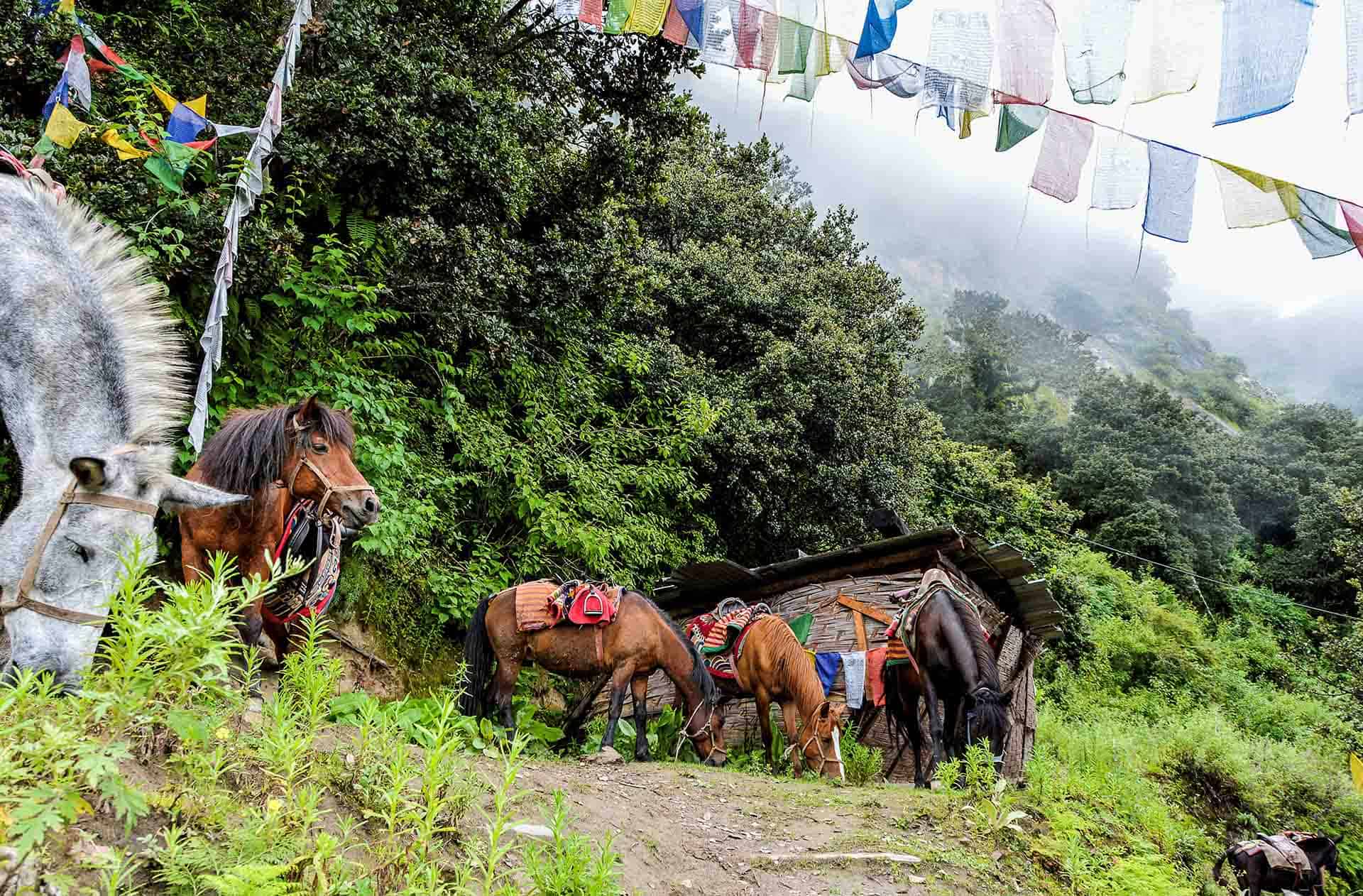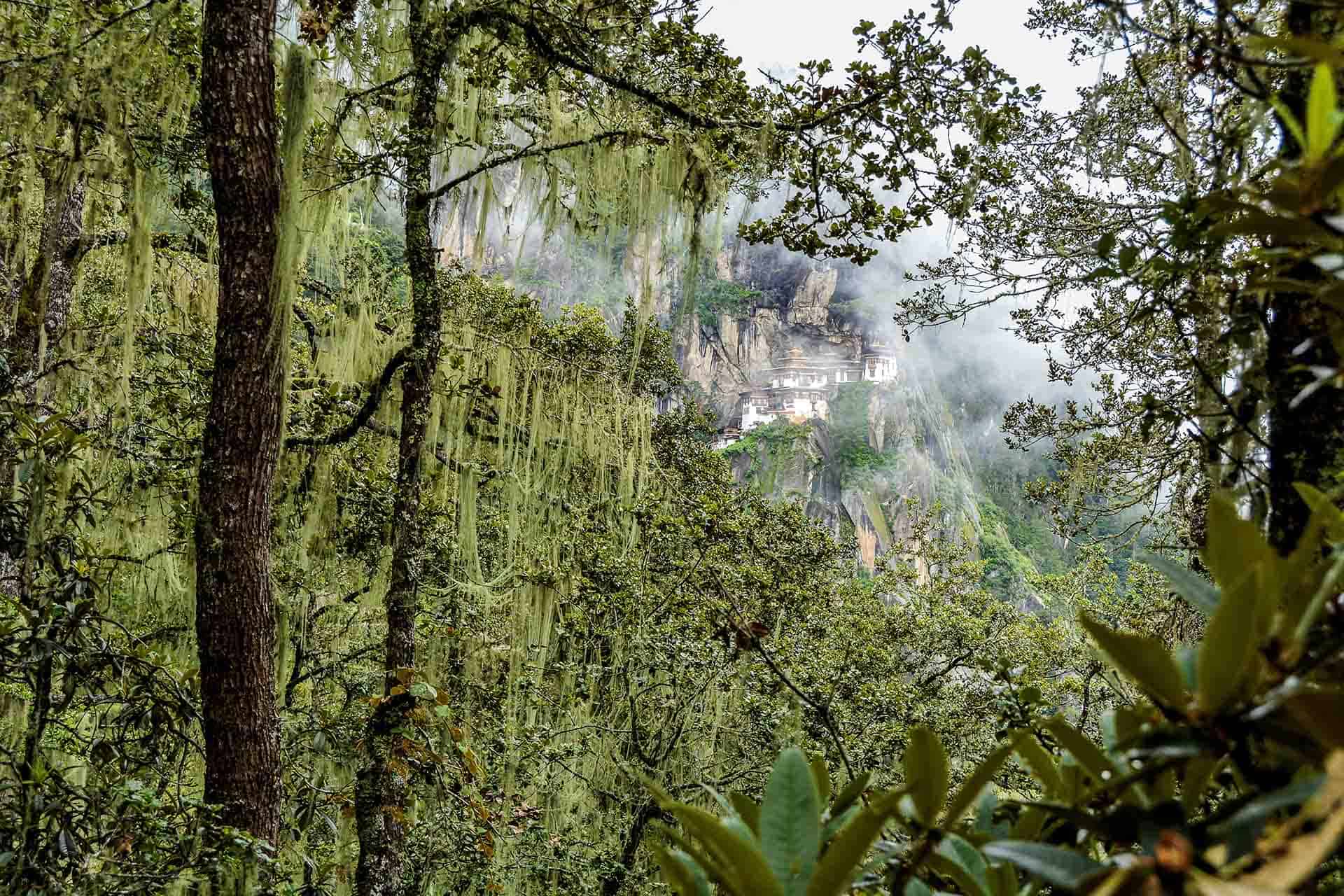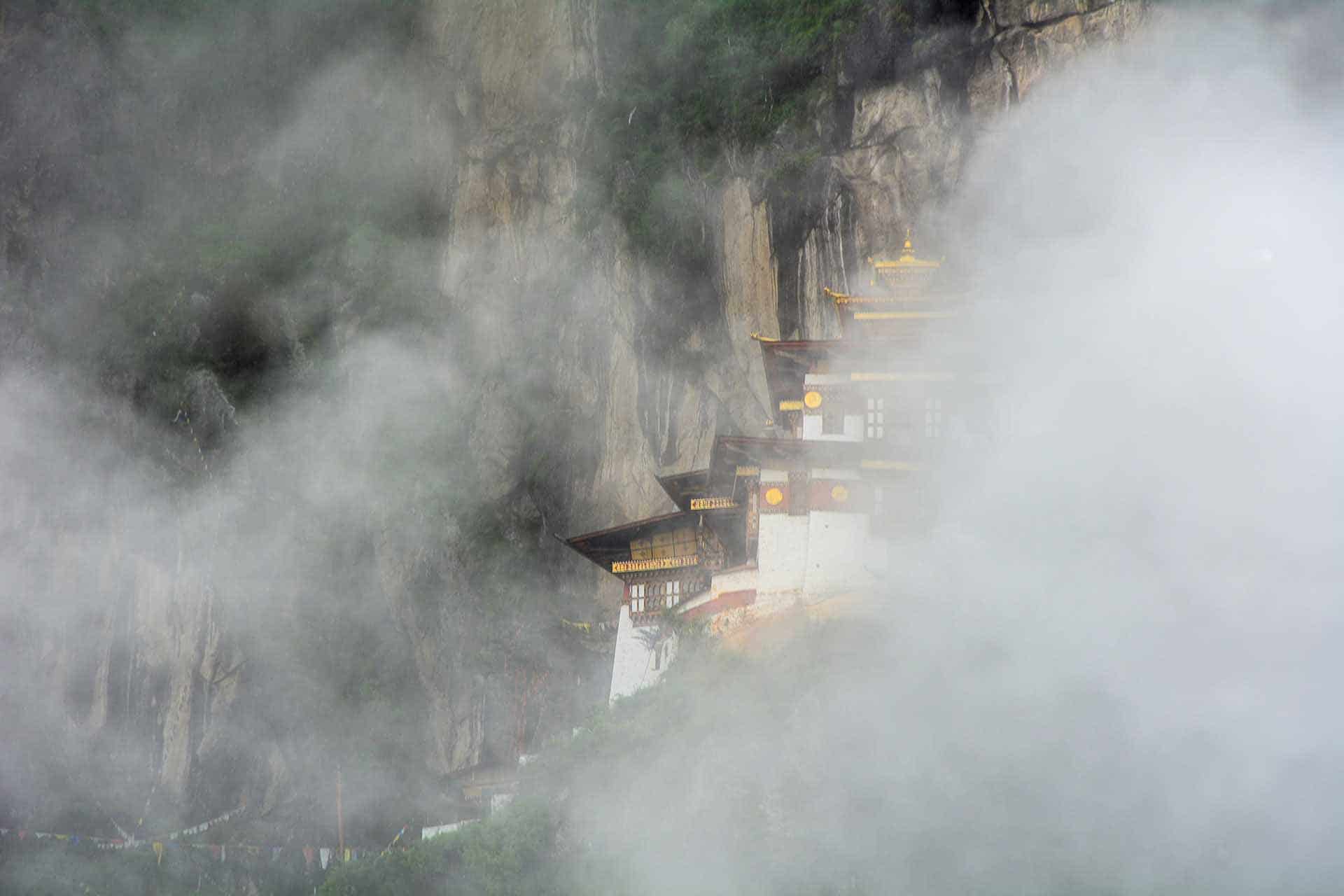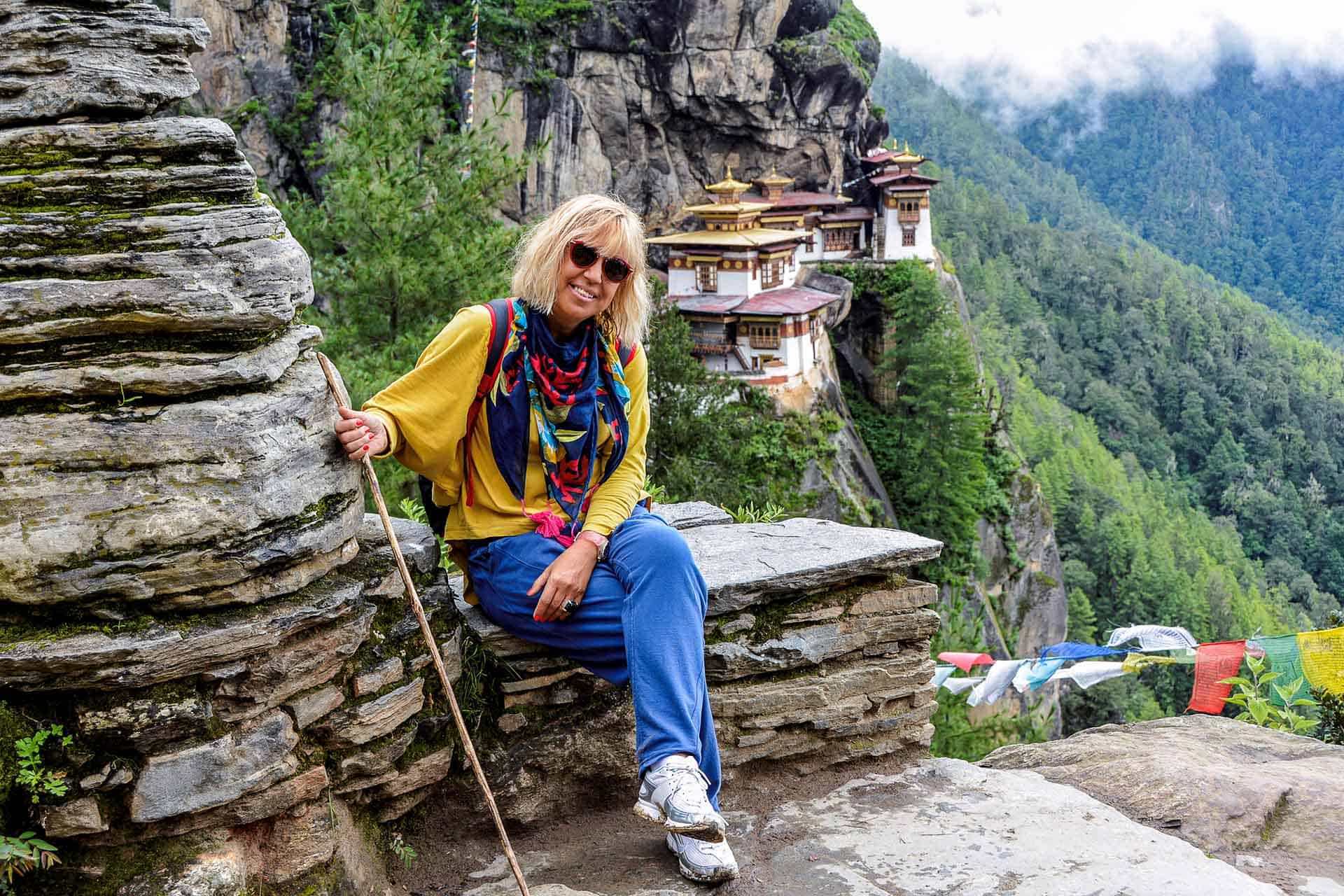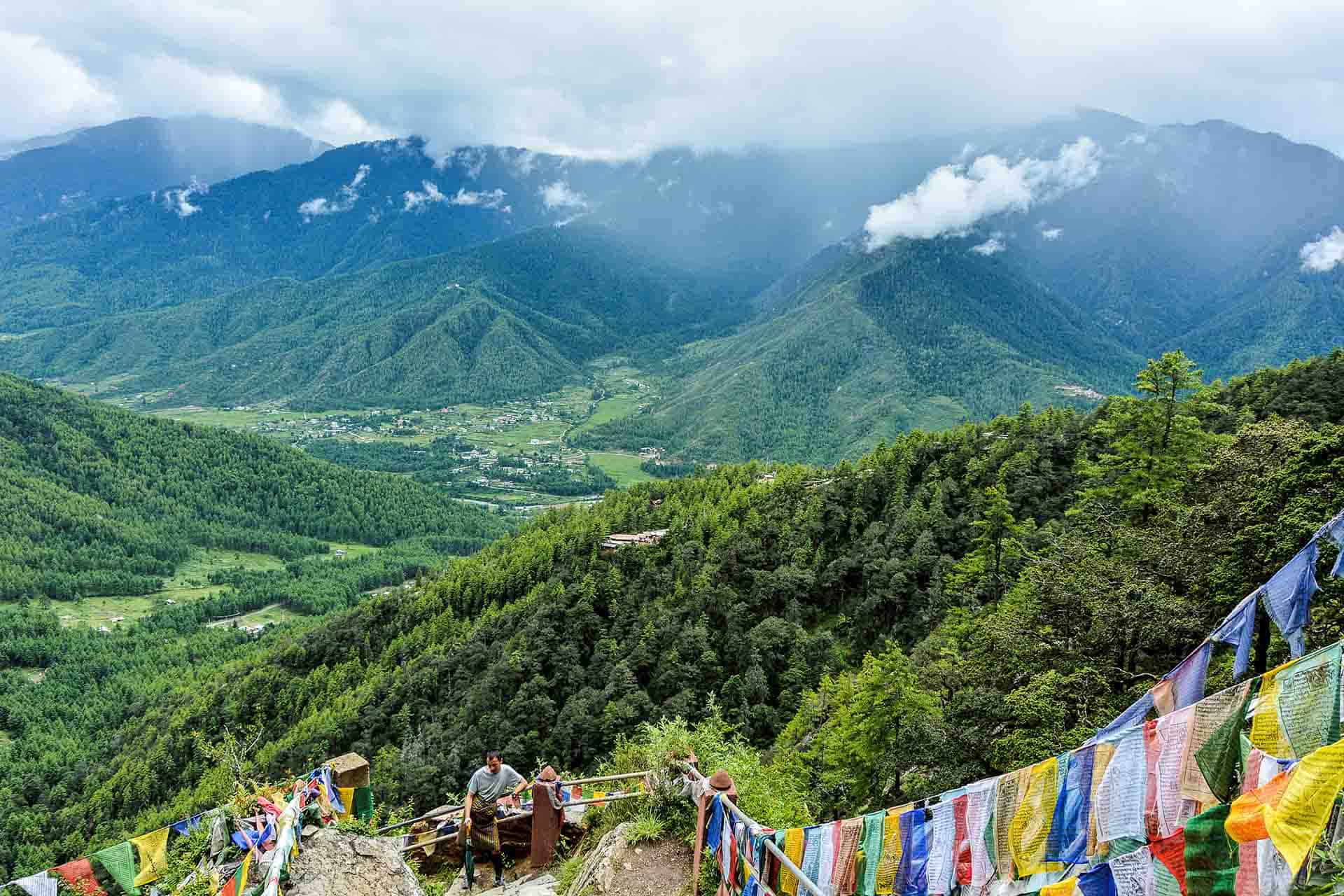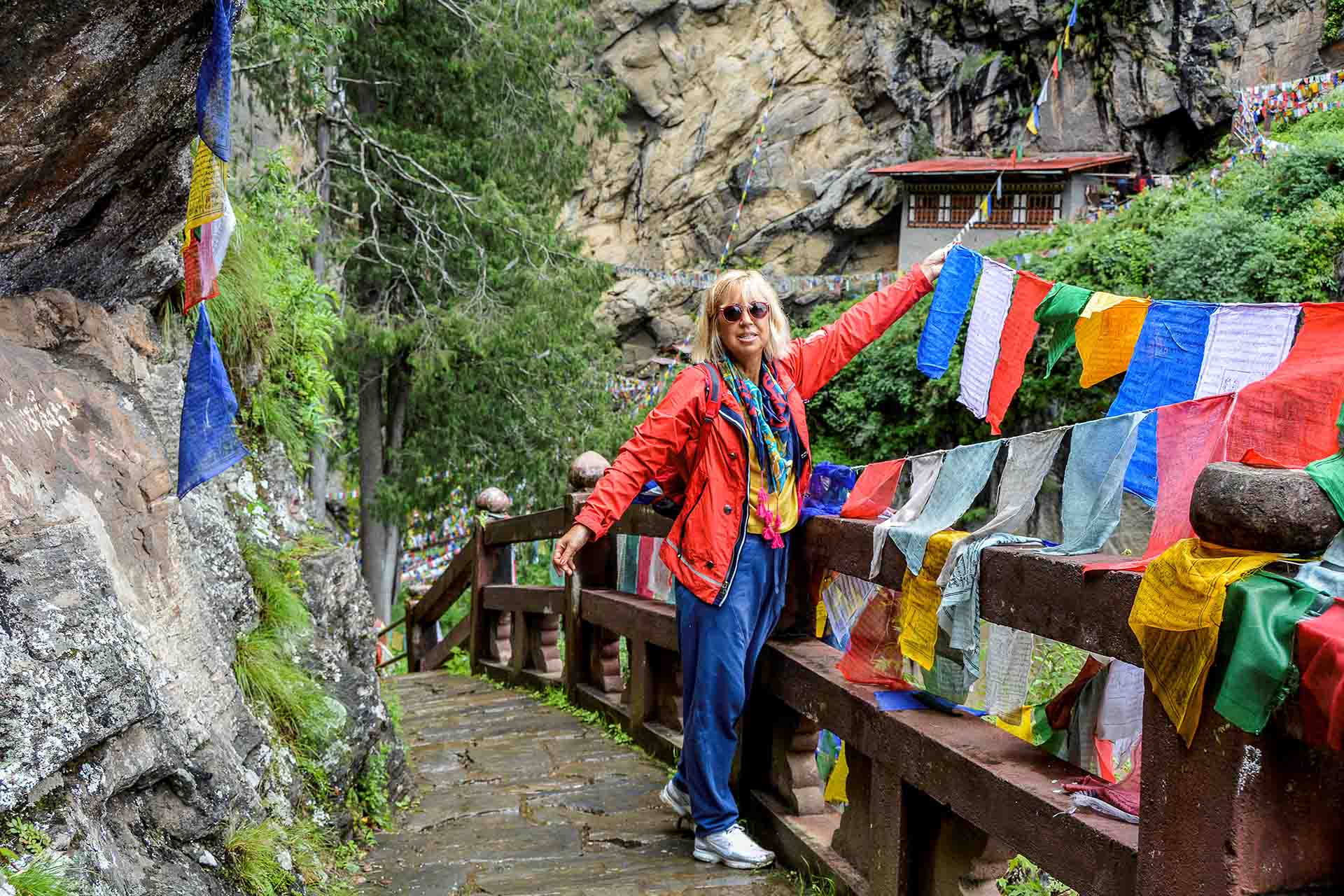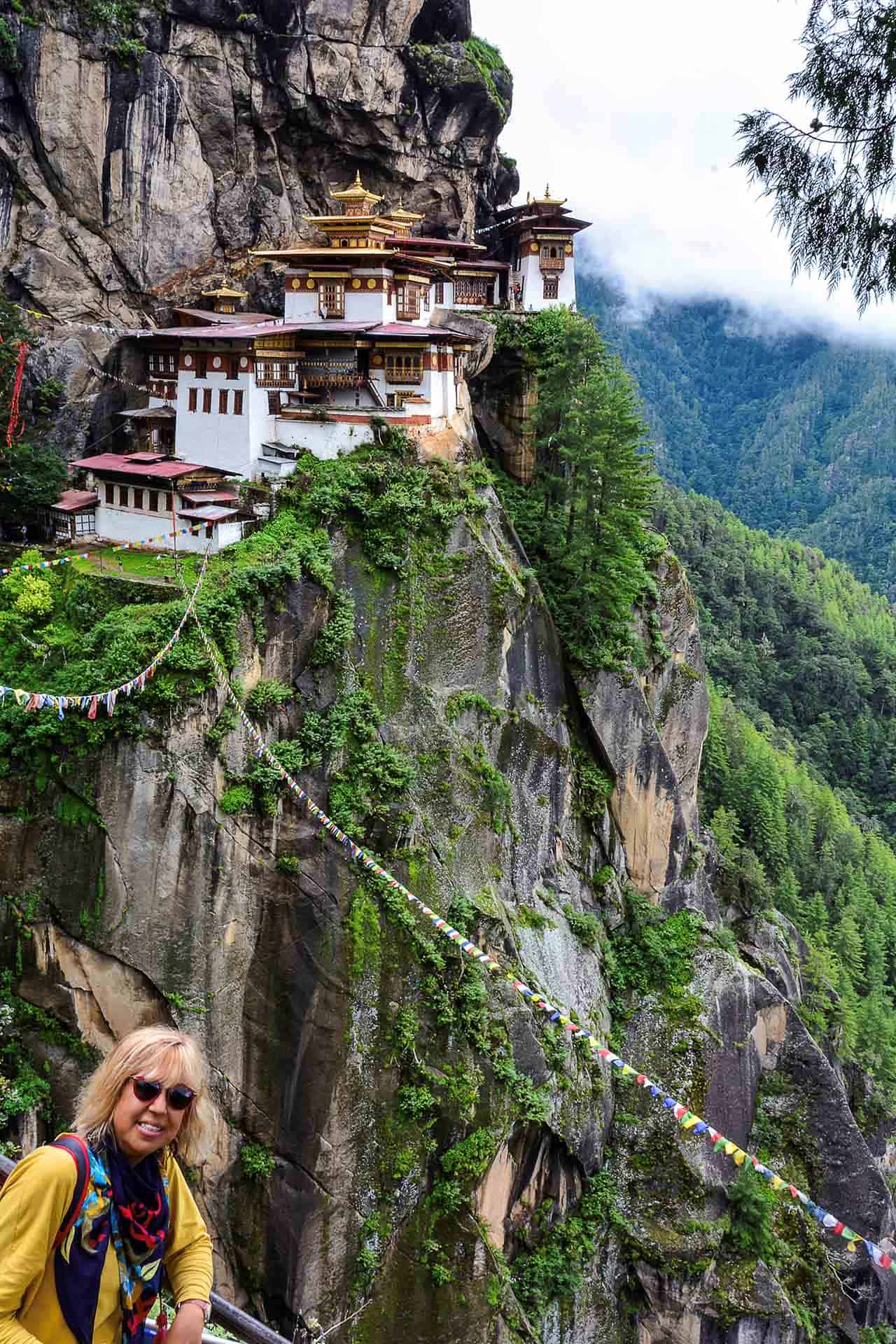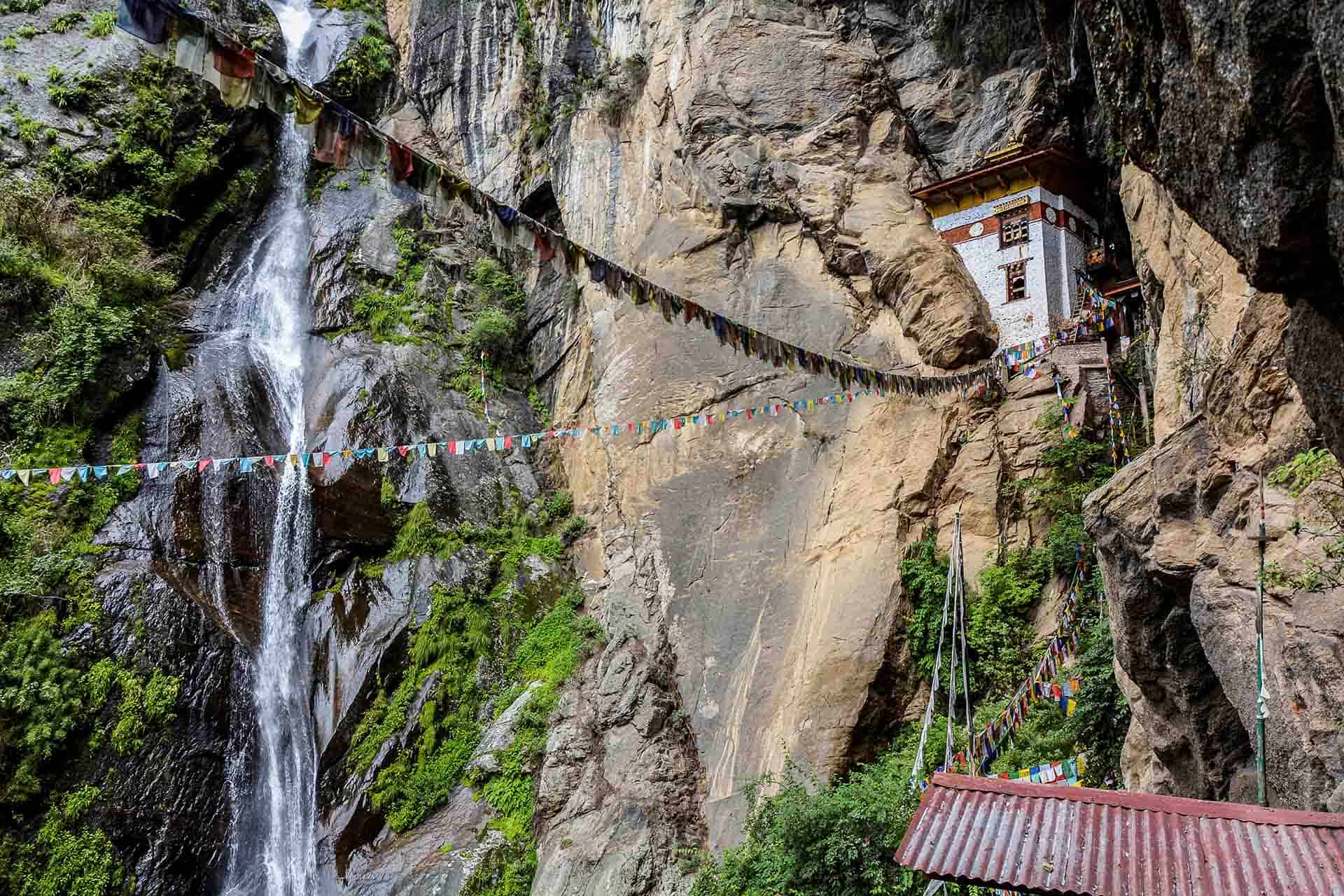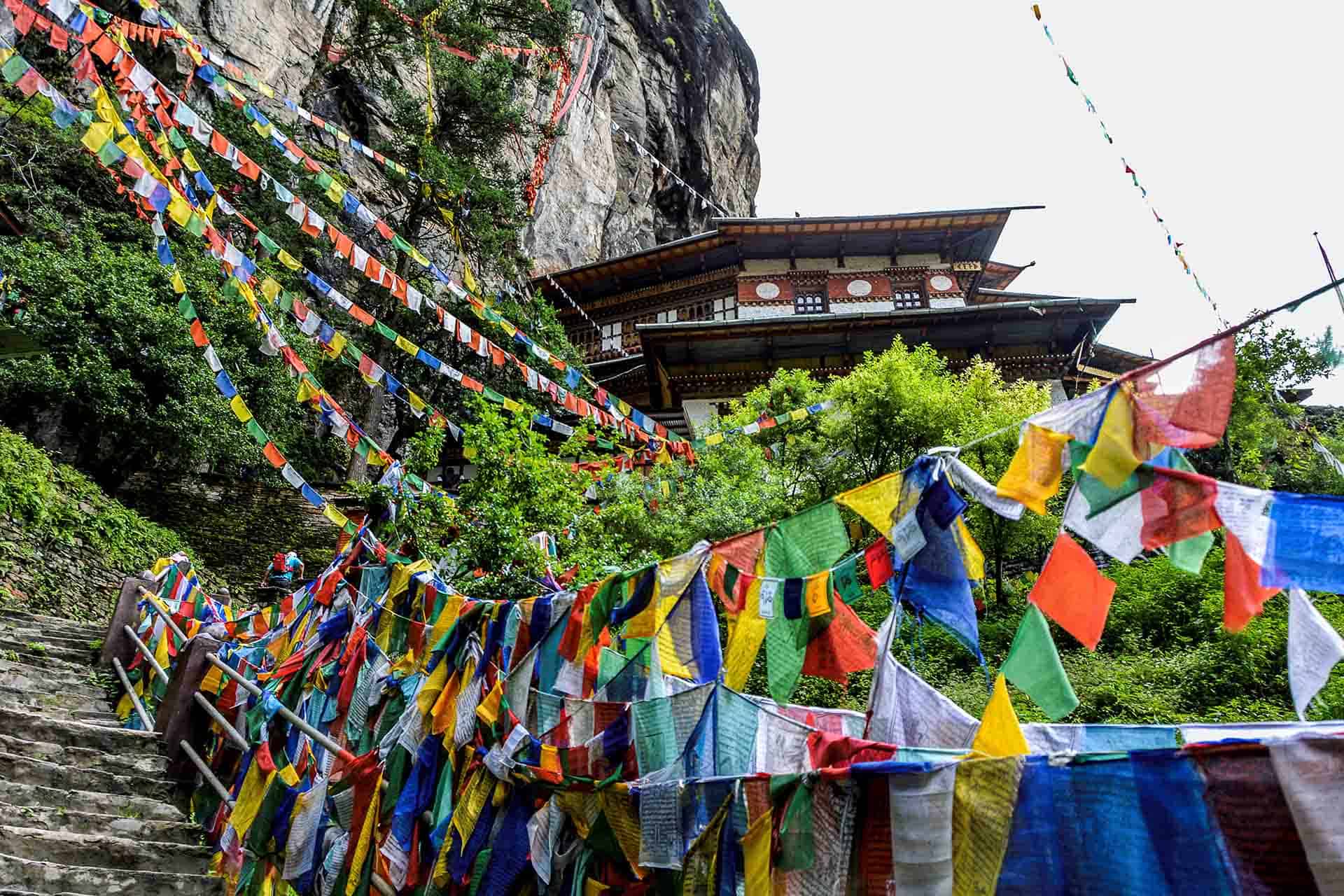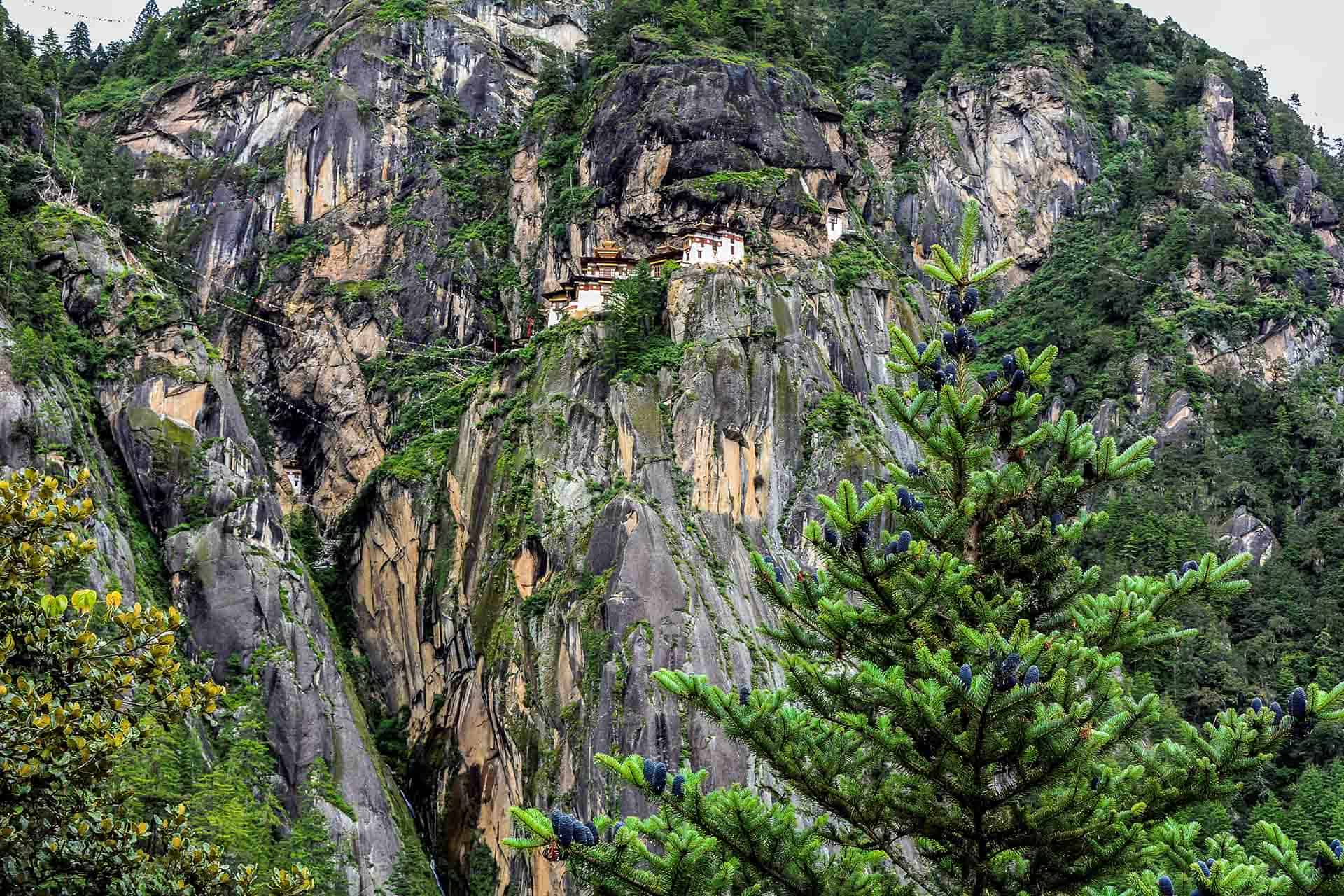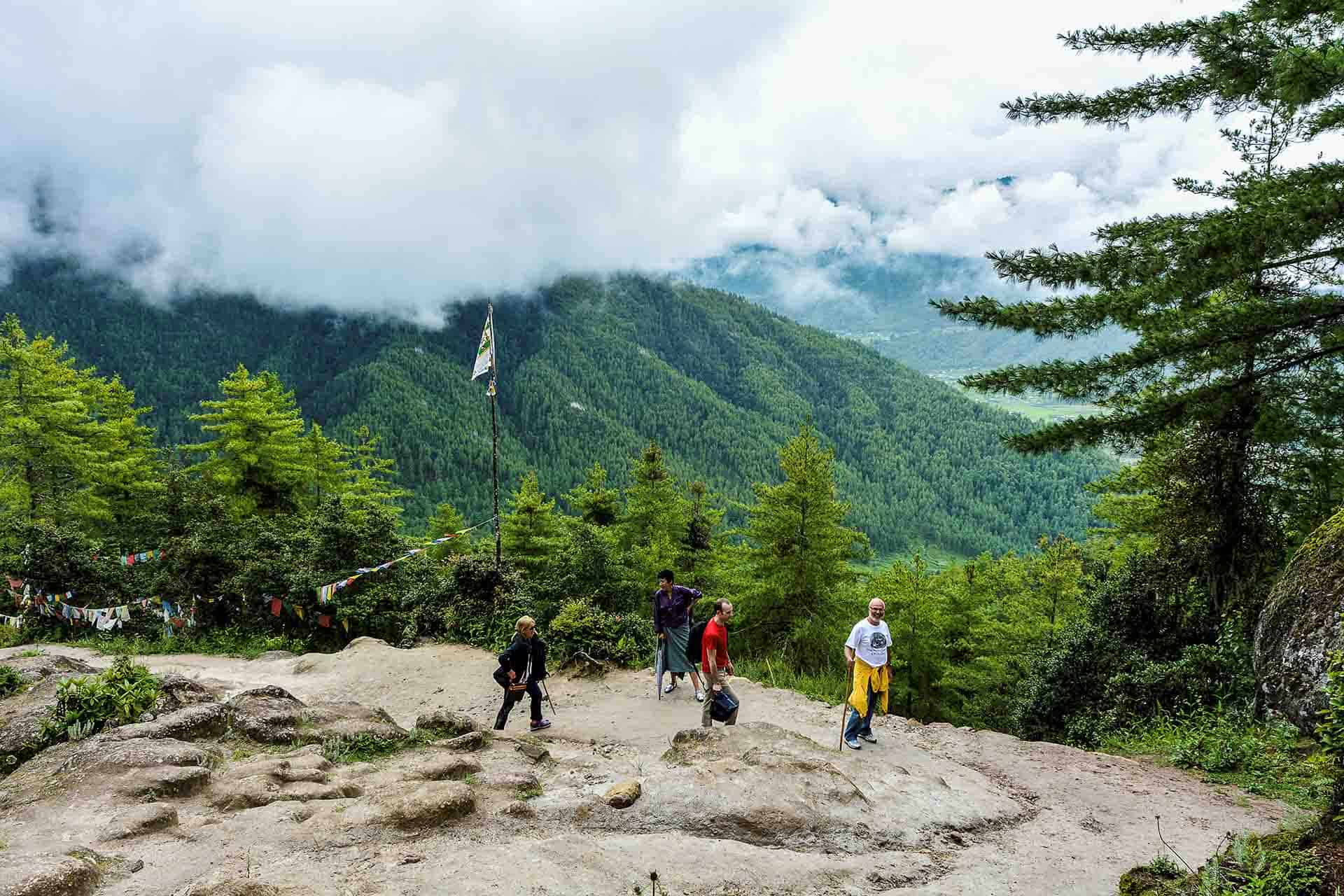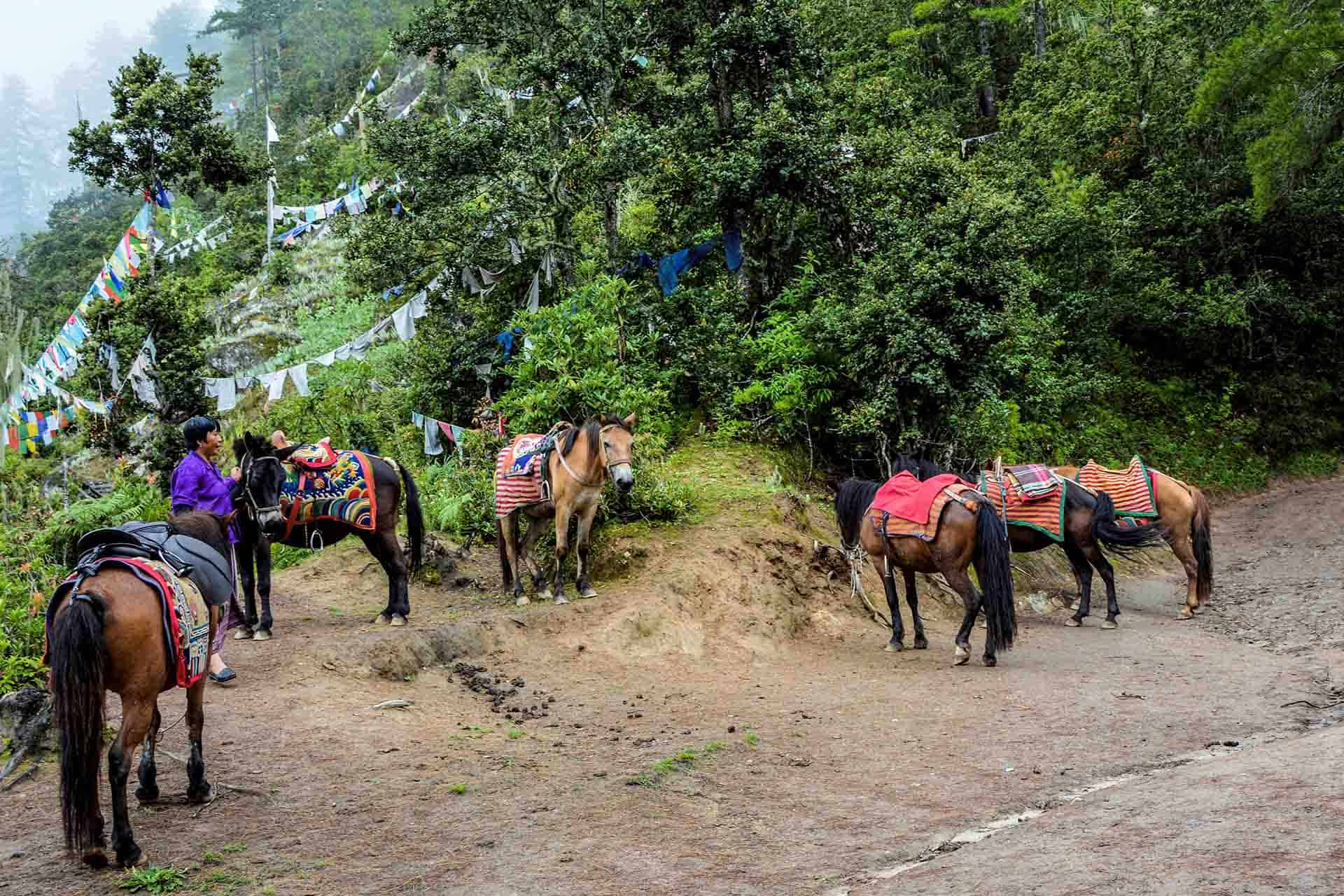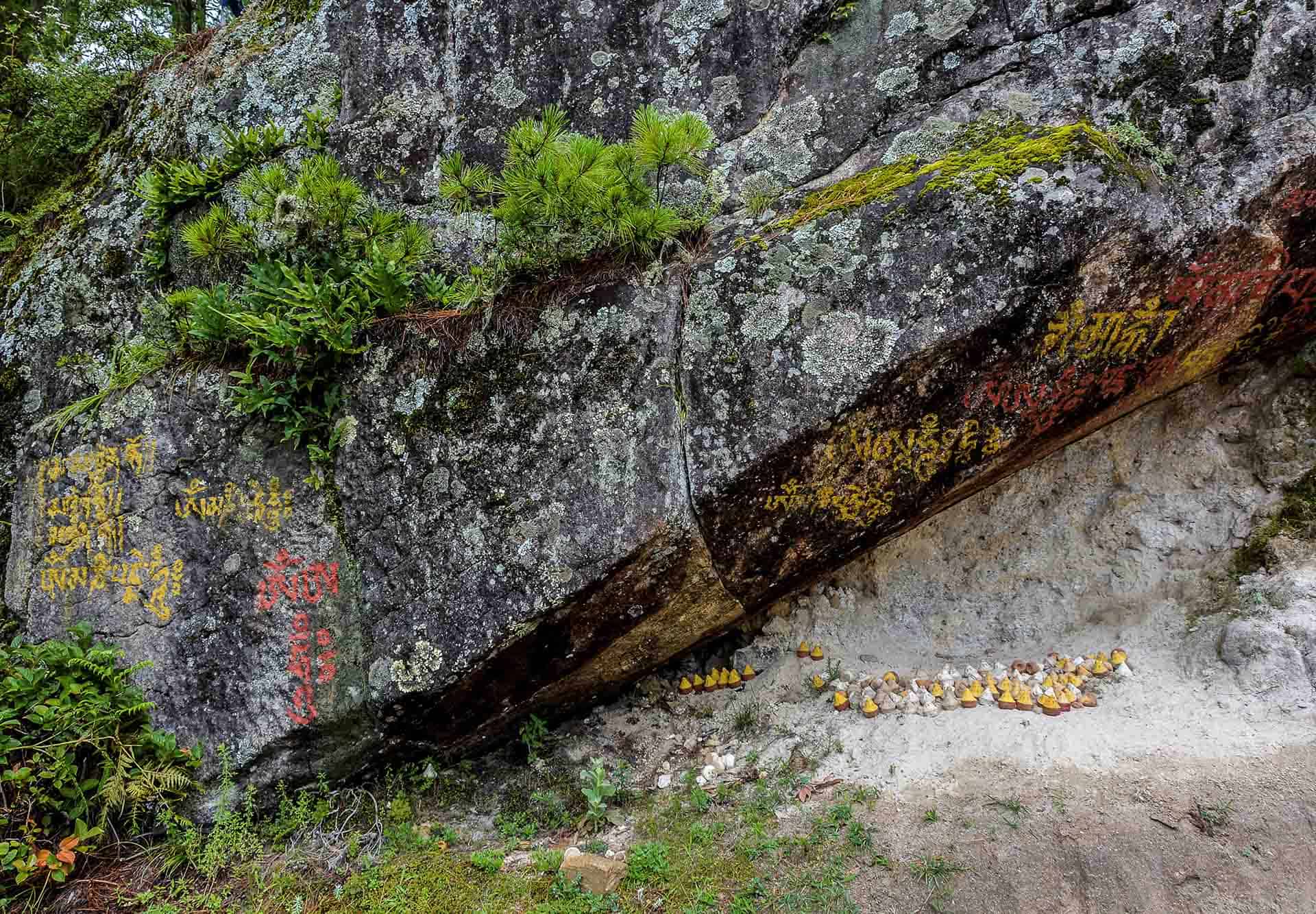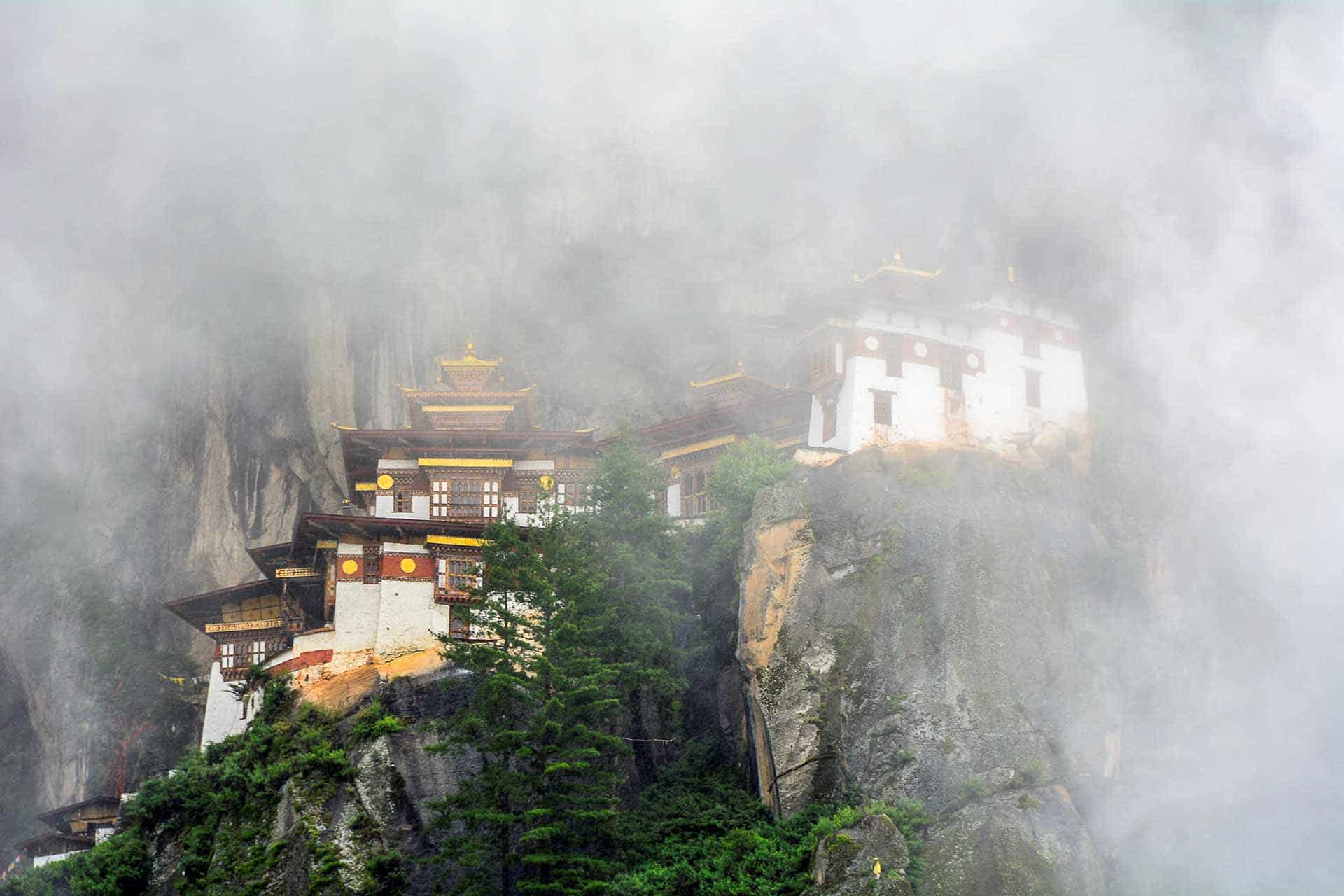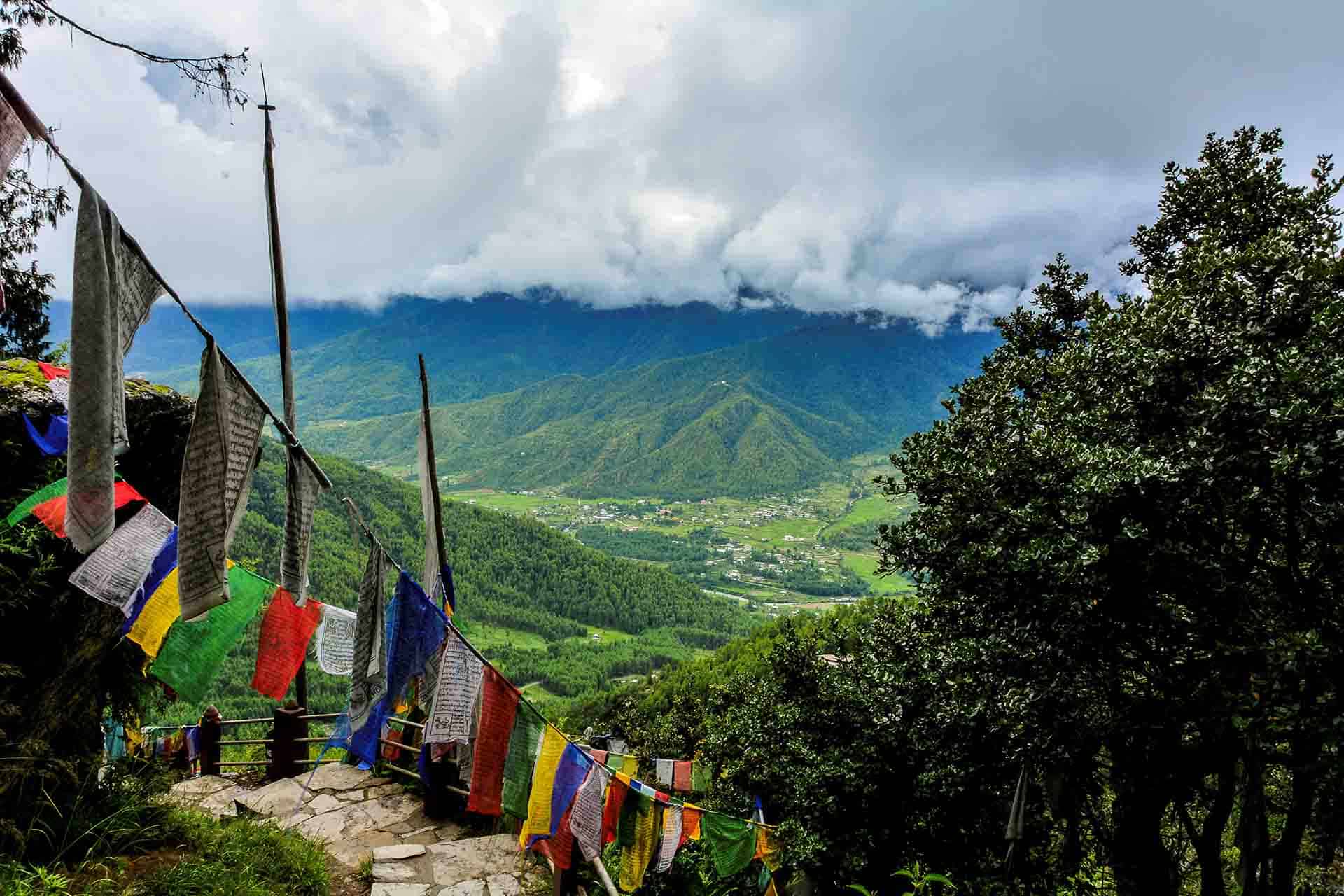I continued with revived interest. The rain had stopped and the hike became a little easier from the point where horses where to arrive (access is allowed up to this point). I notice, increasingly often, caves in the rocks bearing signs with mantras. Also a lot of tsatsas: these little gypsum, stupa-shaped castings, painted with five colors that are related to the five enlightened wisdoms; sometimes contain embedded ashes of dead beloved persons and are intended to liberate their souls.
I focus on stabilizing my breath, by enjoying natural beauty and the fragrance of pine and oak trees, while my eyes toying through the clearances of trees and fog, bring the Tiger's Nest increasingly closer!
Finally I arrive at the plateau across from the Monastery, the principal vantage point for taking photos; the fog has subsided and the tiger's Nest, at long last, appears clearly in front of me.
From here I can see the valley with the villages surrounded by the mountain slopes. From this point start the 600 descending stone steps towards the gorge and the ensuing ascending 200 steps that lead to the monastery, with the prayer flags waving to the breeze. That's where I hung my array of flags!!
The route from this point to the monastery is very scenic. I descended to the gorge, with the rock on my left, and the green expanse on my right. Suddenly rises the steep rock, with the tiger's nest perched on its side!
A 60m high waterfall gushing into a sacred pool and a wooden bridge over the pool, mark the end of the descent and the beginning of the ascent. Scattered structures are on the cliff and the entrance to the monastery is topping the stone stairs, crowned by thousands of prayer flags. Right there is the sacred cave where Guru Rinpoche meditated. It opens once a year for public exposure.
A monk, at the entrance, collects cameras, cell phones and back packs. No photos are allowed inside of the monastery, out of fear of commercialization of it by visitors. We walk through the multiple rooms of the spiritual complex filled with elaborate paintings and architectural details.
The temple is dedicated to Padmasmbhava (also known as Gu-ru mTsan-brgyad Lhakhang, "the temple of guru with eight names”) is a structure that was built around the cave in 1692 by Gyalse Tenzin Rabgye. A fire, caused by a short circuit, broke out in 1998 in the central part of the complex, which contained valuable paintings, works of art and statues. A monk died in the fire. The complex of the monastery buildings was totally destroyed, except for the giant bronze statue of Padmasambhava. The idol is said to have been sparkling from the flames of the fire, a glint of hope amidst tragedy. The locals described what they had seen, and the Fourth King of Bhutan, Jigme Singye Wangchuck, took this as a sign that the temple should be rebuilt as it was, though it’s now more decorative with detailed paintings telling the story of Padmasambhava and more elaborate woodworks and carvings in the architecture.
The complex consists of four main buildings and accommodation for the monks. The buildings built into the caves are in perfect harmony with the rocky natural settings. The buildings of the complex are interconnected by stairs carved into the rock and wooden bridges.
After removing our shoes we entered the hall of altars, where the famous bronze statue of Padmasambhava rests on a simple pedestal, surrounded by smaller statues of his eight manifestations. A local woman does her invocations and rolls prayer beads in a clockwise fashion; a sign of worship and a way to energize inside of us the good energy and expel the bad energy. I notice that the altar is full with water offers, money, snacks and colorful ceremonial cakes, (the tallest I have ever seen), gold bowls in the shape of stupa and incense, burning everywhere. The janitor comes my way with a bowl filled with water and infused saffron, the vegetable liquid that washes my sins away as I drink it and sprinkle some on my hair.
In another space, endless arrays of butter lamps in bowls glow to honor dead loved ones; of course I joined the process by also burning incense!
I stood in the terrace enjoying the view of the Paro valley with cute villages. Ι relaxed and reflected on the experience of the entire 2-hour strenuous trekking, seeking to fulfill my goal to live for a while the devoutness of this monastery on a mountain, at the other end of the world. I am not Buddhist, but I believe in Buddhist philosophy; it's so close to the Christian religion. E.g that greed, anger, ignorance generate negative karma and that we should work towards getting rid of these, so we can achieve the state of Nirvana. Whether we believe in Nirvana or not, let's try to get rid of these flaws, so we can create our own Nirvana on earth!
I left the tiger's nest with mixed feelings and reflections and started on the way back. The rain had stopped and the fog had subsided, but the downhill trail was very slippery, turning our decent into a new adventure. We arrived at the parking lot and after some stretching exercises we set out for Paro where a hot dish of Ema Datsi (Bhutan's national dish) and a cold "Dragon Stout" beer were waiting for us.
By car we came to another point of the valley from which we could enjoy a different view of the monastery. This was the last image I took home; the Tiger's Nest, up there, at the steep rocky cliff, so inaccessible but now so familiar, with the blue pines as foreground!
I managed to reach this far…. I EXPERIENCED IT. One more lesson for whoever wants to follow my dreams for travel.
Regardless of religion and personal philosophy adopt Buddha's quotes: «"Your purpose in life is to find your purpose and give your whole heart and soul to it" » and « "The secret of health for both mind and body is not to mourn for the past, nor to worry about the future, but to live the present moment wisely and earnestly"».
